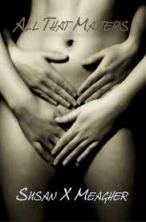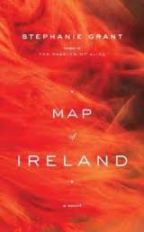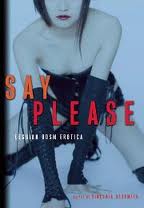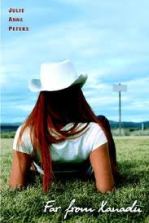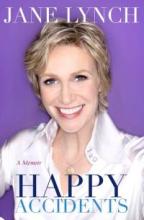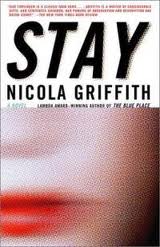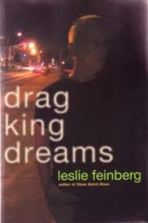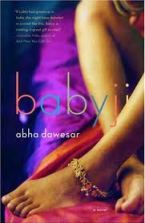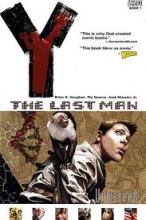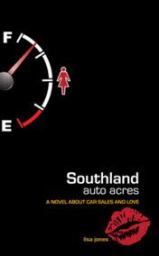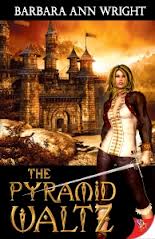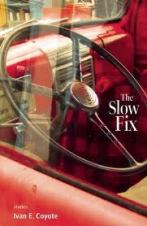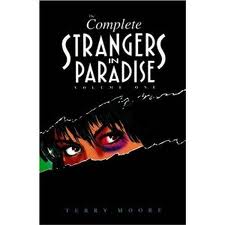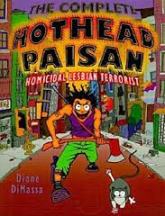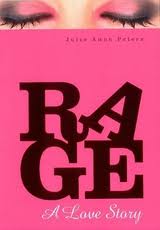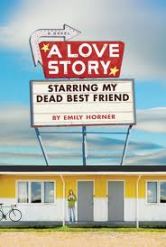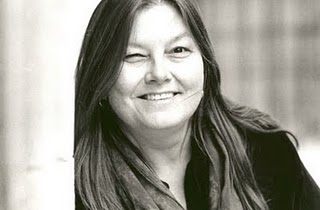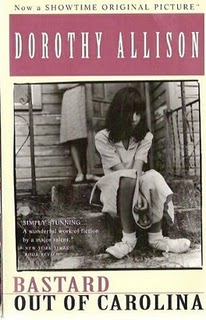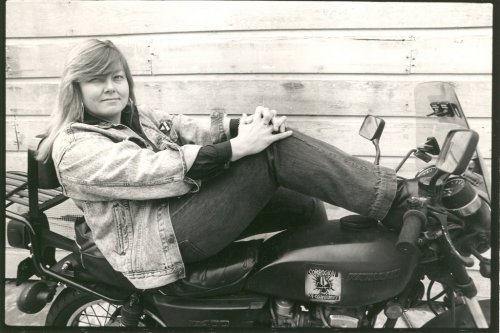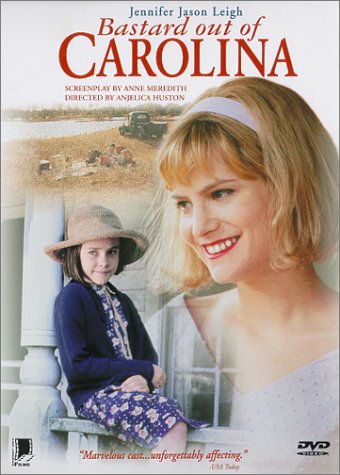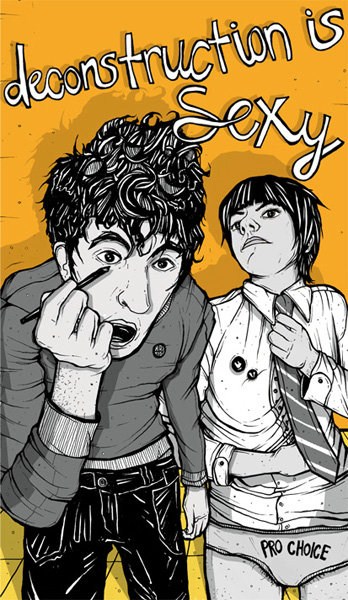55 Literary Books With Great Lesbian Sex Inside Them
For me, it’s never been the visuals so much as its been stories. Given the choice to go the rest of my life without porn or without surprisingly hot sex scenes in literary novels, I would sacrifice porn. I don’t mean erotica or romance novels — which have their own value, and I value them! — I mean how Eileen Myles has a chapter in Inferno called “My Revolution” and it’s just a whole meditation on the genitals of various women with whom she has engaged sexually, or that weekend-long threesome from Chronology of Water, or how I didn’t have any idea The First Bad Man or The Gin Closet were going to be books with lesbian sex in them and then all of a sudden it was happening. I mean how I’ve never forgotten the first time I read Dorothy Allison writing about “frog-fucking” or struggling to reconcile trauma with desire. Reading authors like Dorothy Allison or Mary Gaitskill or Kathy Acker who are VERY frank and explicit about sex in their work makes me feel like a tiger.
Anyhow, I took to twitter dot com to ask y’all about literary novels you’ve loved for the story but you know, also for the sex. Firstly, it’s worth noting that certain parts of Inferno and Chronology of Water, as aforementioned in this intro, came up in this thread almost immediately, thus affirming my life choices.
This post was originally published in February 2019 and has been updated for 2023.
Zami: A New Spelling of My Name, by Audre Lorde (1982)
 biomythography // lesbian
biomythography // lesbian
“Ginger moved in love like she laughed, openly and easily, and I moved with her, against her, within her, an ocean of brown warmth. Her sounds of delight and the deep shudders of relief that rolled through her body in the wake of my stroking fingers filled me with delight and a hunger for more of her. The sweetness of her body meeting and filling my mouth, my hands, wherever I touched, felt right and completing, as if I had been born to make love to this woman, and was remembering her body rather than learning it deeply for the first time.”
“Lesbian Appetites,” by Dorothy Allison (from Trash: Stories,”1988)
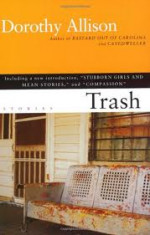 short stories // lesbian
short stories // lesbian
“We wrestled, eggplant breaking up between our navels. I got her shorts off, she got my jeans down. I dumped a whole plate of eggplant on her belly.
“You are just running salt, girl,” I teased, and pushed slices up between her legs, while I licked one of her nipples and pinched the other between a folded slice of eggplant. She was laughing, her belly bouncing under me.
“I’m gonna make you eat all this,” she yelled.
“Of course,” I pushed eggplant out of the way and slipped two fingers between her labia. She was slicker than peanut oil. “But first we got to get the poison out.”
Don Juan in the Village, by Jane DeLynn (1990)
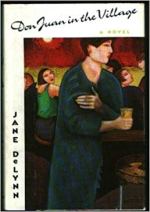 short stories // lesbian
short stories // lesbian
“With my nipple still in her mouth she pushed my jeans down so they encircled my ankles. I was sweating and messy. She was much older than me, almost clinical as she proceeded, which not only aroused me but made me like her better. Somehow things were more in balance than earlier in the evening. I wished she had brought a camera with her so we could have taken pictures of me masturbating to the sight of her naked body — and ever after I could torture myself over what she had done with them.”
Written on the Body, by Jeanette Winterson (1992)
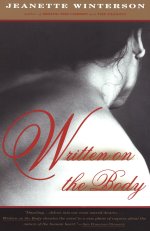 novel // queer
novel // queer
“Nail me to you. I will ride you like a nightmare. You are the winged horse Pegasus who would not be saddled. Strain under me. I want to see your muscle skein flex and stretch. Such innocent triangles holding hidden strength. Don’t rear at me with unfolding power. I fear you in our bed when I put out my hand to touch you and feel the twin razors turned towards me. You sleep with your back towards me so that I will know the full extent of you. It is sufficient.”
Two Or Three Things I Know For Sure, by Dorothy Allison (1995)
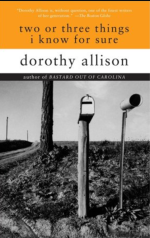 memoir // lesbian // i just wanted to include this quote here because it is one of my favorite things anybody has ever written!
memoir // lesbian // i just wanted to include this quote here because it is one of my favorite things anybody has ever written!
“I told her, Don’t touch me that way. Don’t come at me with that sour-cream smile. Come at me as if I were worth your life – the life we make together. Take me like a turtle whose shell must be cracked, whose heart is ice, who needs your heat. Love me like a warrior, sweat up to your earlobes and all your hope between your teeth. Love me so I know I am at least as important as anything you have ever wanted.”
Rat Bohemia, by Sarah Schulman (1995)
 novel // lesbian
novel // lesbian
Read our interview with Sarah Schulman
“I clenched my teeth. She bit my neck until I thought her teeth would break. Thank God. I like it when it hurts. Vaginal trauma is what I live for. Skeletal friction first and then my skin is the softest skin. When she comforted me, I loved the comfort. When she hurt me, I loved the pain. When she controlled me I loved the capitulation. When she serviced me I loved the intent. Coming out is not the end of insanity, you know. It’s only the beginning.”
“Buscando,” by Claudia Von Vacano (The New Fuck You: Adventures in Lesbian Reading, 1995)
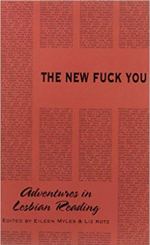 one story in an anthology of fiction, poetry and essays // lesbian
one story in an anthology of fiction, poetry and essays // lesbian
“I am masturbating. I am letting la Sangre crawl down the walls, making her way to my fingers. The fingers push her back to my ovaries, making red blood waves. I pull my fingers out and let the blood ooze gently onto my hand. I cup a handful and let it drip on my flesh. First on my round belly, just a drop enclosed within my navel, then on my nipples. Bruised breasts, going from purple green to tender brown. There is a powerful message in the red fluid that is my blood. It is trickling down through the orifice, the mouth-like opening at the tip of my tit. Instead of milk being sucked out from its deep roots, la Sangre is finding her way in. Buscando y arrancando. There are rough ropes tied in intricate and ornate knots. I am being held by these threads like my flesh is being sewn shut, the needle being held by a hand blurry in my vision. Raises. Roots sucking the water.”
Fall On Your Knees, by Ann-Marie MacDonald (1996)
 historical novel // lesbian
historical novel // lesbian
“I slid my hands under and up her smooth sides, I wanted to be slow to savor but we couldn’t, she gripped me and moved under me. I felt her nipples under my palms and I think I died. Rose gasped as though I’d stabbed her and I felt like a savage robbing a sacred tree, her thigh between my legs. I found her hand and led it to a place I know, I kissed it with the mouth that I keep hidden, then took her inside and sucked her like the greedy tide that can’t decide to swallow or disgorge. I lost track of everything. And even after I finally could stop, I knew that I would never be finished.”
In Another Place, Not Here, by Dionne Brand (1996)
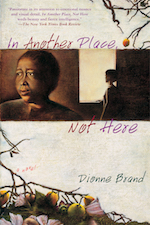 novel // lesbian
novel // lesbian
“…to appear normal she had slept with men at first. Slept with was hardly the phrase, certainly not fucked. Sex. Yes, she had sex with men until one day she couldn’t have it any more, just couldn’t and returned to the thought of her breasts in the curve of a woman’s, her legs wide to her tongue, her lips warm to her face, the fat of her belly, her hands searching her back, easing her muscles, watering her thighs. She’s thought of the brush and ease of the skin, the melt into the soft and swell of the body. How this is sometimes not done, not spoken, in her room, the beer at their lips, the moment with nothing to say between them. Then sometimes she would fall asleep in the curve of the breasts, in the crook and keen musk of thighs, the slip of the skin. She wants nothing more.”
Tipping the Velvet, by Sarah Waters (1998)
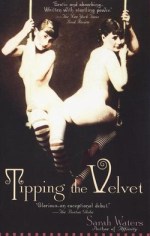
historical fiction // lesbian
“Soon her breaths became moans, then cries; soon my own voice joined hers, for the dildo that serviced her also pleasured me — her motions bring it with an even faster, ever harder pressure against just that part of me that cared for pressure best. I had one brief moment of self-consciousness, when I saw myself as from a distance, straddled by a stranger in an unknown house, buckled inside that monstrous instrument, panting with pleasure and sweating with lust. Then in another moment I could think nothing, only shudder; and the pleasure — mine and hers — found its aching, arching crisis, and was spent.
After a second she eased herself from my lap, then straddled my thigh and rocked gently there, occasionally jerking, and at last growing still. Her hair, which had come loose, was hot against my jaw.
At length she laughed, and moved again against my hip. “Oh, you exquisite little tart!” she said.”
My Mother: Demonology, by Kathy Acker (1993)
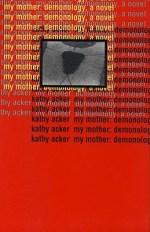 experimental fiction // queer
experimental fiction // queer
“After she came back, Isabelle and I arranged to meet alone in the church.
“I missed you.”
“I missed you.”
I dug her neck into my teeth. Then I nailed her hands against the floor. Her pincers tore at me. I followed everything inside me. From now on her legs would always be spread open. I stormed her openings as if she was beleaguered fortress.
“Tell me.”
“I love you.”
“Again.”
“I love you.”
“Again.”
“I love you.”
Another memory: Night after night when it was dark I crawled into I’s bed. We held hands and told each other our stories of childhood.
“The school,” she said, “was burning down.”
No. Our cunts.
I don’t remember. Don’t describe what can’t be remembered. What will never be seen. What’s between the legs, I and I. She was discovering the little organ that the cock imitates. My limitations are too painful. I transformed into the sex of a dog, red and unbearable to my own eyes.
It has come.
(For this reason women don’t need Christ.)
Our comings can’t end.”
Valencia, by Michelle Tea (2000)
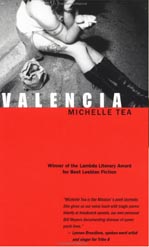 memoir // lesbian
memoir // lesbian
“I took the brat through the dark streets of the city I had owned first and we sucked from glass bottles, hands twisting the sacks around the necks into paper flowers. We fucked in bathrooms and alleys bold as boys, bent over porcelain sinks that creaked from the wall with the weight of her hand inside me. The rustle of clothes and rats, clink of belt buckles and feet on broken glass. When someone saw us by accident, I let them be embarrassed. Shame was like a dirty tampon pulled from my body and flung in the bucket when I was with Iris.”
Fingersmith, by Sarah Waters (2002)
 historical novel // lesbian
historical novel // lesbian
“So, I kissed her again. Then I touched her. I touched her face. I began at the meeting of our mouths — at the soft wet corners of our lips — then found her jaw, her cheek, her brow — I had touched her before, to wash and dress her; but never like this. So smooth she was! So warm! It was like I was calling the heat and shape of her out of the darkness — as if the darkness was turning solid and growing quick, under my hand.
She began to shake. I supposed she was still afraid. Then I began to shake, too. I forgot to think of Gentleman, after that. I thought only of her. When her face grew wet with tears, I kissed them away.
“You pearl,” I said. So white she was! “You pearl, you pearl, you pearl.”
Lee and Elaine, by Ann Rower (2002)
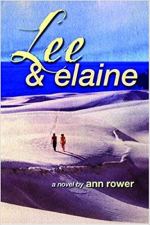 experimental novel // queer
experimental novel // queer
“I felt so good, tied to the bed, without choice, chosen, legs and arms spread; I hovered above myself, seeing my fantasy of the student’s experienced fingers opening the teacher’s clothes, unsnapping teacher, spreading her, sliding inside the material; over her breasts, around her shoulders, down to her navel over her belly and down into her bush, which was not as bushy, of course, as it had been when she was a student herself, much to her sorrow. I returned to my body and gazed up at the face on top of me, close, intent, the curly gray hair getting curlier from dampness. I started to thrash.”
The Salt Roads, by Nalo Hopkinson (2003)
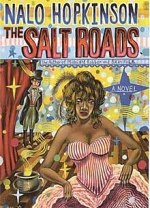 novel // queer
novel // queer
“I burrowed my head in closer and tunnelled my tongue into her gully hole. Lisette giggled, then sighed, my girl, and opened her knees wider. The salty liquor of her spread in my mouth. I lapped and snuffled, held her thighs tight as she wriggled and moaned. Pretty soon she was bucking on my face, calling out and cursing me sweet. All sweaty, she was, and she had her thighs clamped to my ears so that my hearing was muffled. My hair was caught beneath her. It pulled, but I cared nothing for that. I reached behind her and squeezed her bumcheeks, used them to pull her closer. She wailed and shoved herself at me, until to breathe at all I had to breathe in her juice. And she pitched and galloped like runaway horses, but I held her, held her down and sucked her button in, twirled my tongue around it. Then even her swears stopped, for she could manage words no longer, and only panted and moaned. The roar she gave at the end seemed to come from the pit of her, to bellow up through her sopping cunny.”
“Her Body, Mine, and His,” by Dorothy Allison (from Skin: Talking About Sex, Class and Literature, 2005)
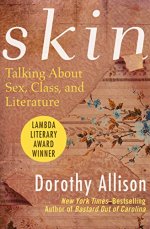 essays // lesbian // if my ex is reading this, i would like her to know that i think she still has my copy of this book and i would like it back!!
essays // lesbian // if my ex is reading this, i would like her to know that i think she still has my copy of this book and i would like it back!!
“Frog fucking. Her hands on my hips; my heels against my ass, legs spread wide; her face leaning into my neck; my hands gripping her forearms. Her teeth are gentle. Nothing else about her is. I push up on the balls of my feet, rock my ass onto my ankles, reaching up for every forward movement of her thighs between mine. Her nipples are hard, her face flushed, feet planted on the floor while I arch off the edge of the bed, a water mammal, frog creature with thighs snapping back to meet her every thrust.”
Girl Meets Boy: The Myth of Iphis, by Ali Smith (2007)
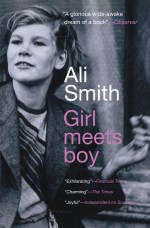
historical experimental fiction // queer
“Her beautiful head was down at my breast, she caught me between her teeth just once, she put the nip into nipple like the cub of a fox would, down we went, no wonder they call it an earth, it was loamy, it was good, it was what good meant, it was earthy, it was what earth meant, it was the underground of everything, the kind of soil that cleans things. Was that her tongue? Was that what they meant when they said flames had tongues? Was I melting? Would I melt? Was I gold? Was I magnesium?”
Santa Olivia, by Jacqueline Carey (2009)
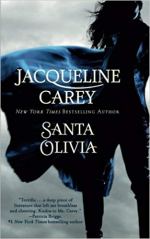 urban fantasy novel // queer
urban fantasy novel // queer
“Oh, fuck it,” Pilar whispered. She took Loup’s face in her hands and kissed her, hard and deep. The rainwater was cool, but her skin was warm beneath it; and there was no pulling away, only pushing closer. Closer and closer. She pressed Loup against the door, kissed her hungrily, her tongue agile and expert. Pilar’s breasts pressing against hers, nipples erect with cool rain and desire. One leg pressed between her thighs. Her hands slid down to Loup’s waist, under her tank top, craving skin. Loup wound her arms around Pilar’s neck, kissing her back.
It was exhilarating.
Better than fighting, better than anything.”
Inferno, a Poet’s Novel by Eileen Myles (2010)
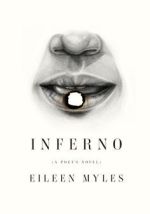 memoirish novel // lesbian
memoirish novel // lesbian
read our review of Inferno
“Waves of feeling rocked through my chest and cunt. It was too much to ask, to imagine. She was the lesbian. It was hers. Her bed. her room. Her beautiful sunshine going down on the awful medieval filth of me. A horrible dirty twenty seven year old. Too late. I was rotten with men. All that sex an hour ago now made me hopelessly wrong. To have the privilege of a girl. Her smells were all I could hope for. She would eat me?”
Chronology of Water: A Memoir, by Lidia Yuknavitch (2011)
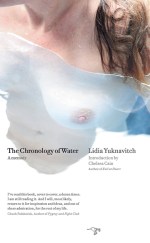 memoir // bisexual
memoir // bisexual
“Whoever was staying in the [rooms next to ours] must’ve gotten an earful. Hours of woman on woman on woman whose regular lives didn’t allow for such wild abandon. Sometimes Hannah’s fist up my cunt Claire’s mouth on mine or me sucking her epic tits. Sometimes Hannah on her stomach me up her ass with a strap on Claire behind me giving me a reach-around — a skill she intuited. Sometimes Claire on all fours me and Hannah filling every hole licking every mouth rubbing her clit making her scream making her entire corpus shiver her head rock back her woman wail let loose gone primal cum and shit stains and spit and tears. I came in Hannah’s mouth, her face between my legs like some goddess in a new myth.”
My Education: A Novel, by Susan Choi (2013)
 novel // bisexual
novel // bisexual
“She made me come so many times that afternoon that had I been somewhat older, I might have dropped dead. Had I been a doll, she might have twisted off each of my limbs, and sucked the knobs until they glistened, and drilled her tongue into each of the holes. Certainly had the windows been open, as would have made sense on that sunny June day, my thundering cries, in the end, would have summoned the neighbors; for Martha, in dismantling me, dredged a voice out of me I did not know I owned; the devastation of my pleasure surged outward and outward again, like an ocean-floor tremor, while that voice I had never imagined was bellowing harshly oh GOD oh GOD OHGODOHGODOHOGOD! — and it was then that Martha finally flung herself onto my shore, and through violent sobs kissed me…”
Women, by Chloe Caldwell (2014)
 memoir // bisexual
memoir // bisexual
“She unbuttons my shirt. Underneath I am wearing a lace tank top. What is this shirt, she says, This shirt is going to haunt me. We kiss and kiss and then she turns me around, fucking me from behind with her hand, pulling my underwear to the side. I keep my tank top on. I like fucking you while you still have some clothes on, she says. We laugh after I come. Let’s make you come again, because it’s fun, she says. I ask her if she came and she says, Did it feel like I came? I ask her if she wants to see the new lingerie I bought. She says yes. I leave the bed and walk to my dresser, opening the top drawer, stripping my clothes off and pulling the pink and lacey dress over my head. She lies on her back on the carpet and I lie on top of her.”
Dirty River: A Queer Femme of Color Dreaming Her Way Home, by Leah Lakshmi Piepzna-Samarasinha (2015)
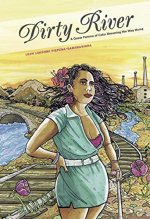 memoir // essays // queer
memoir // essays // queer
read our review of Dirty River
“You’re so open right now. I could almost fist you,” my lover says. I say “making love” with this one without irony. There are many moments when we make love and kiss, and it’s sacred, it’s hovering spirits inhabiting and flying over our bodies; it’s making love with the psychic incest-survivor crazy who is a grownup after a lot of therapy and medication who I fund, waded in a river and prayed for.
They have four fingers inside me. They have big hands. I am all the way open. The day before my period. New moon in Pisces, and I’ve been crying from the gut all week. All the way love. All the way open to you. It doesn’t hurt. It’s not hard. I am opening. I come a series of high and open. I will keep opening for you. I make this joyful choice.”
Life Is Wonderful, People are Terrific, by Meliza Bañales (2015)
 novel // queer
novel // queer
read our review of Life Is Wonderful, People are Terrific
“Having her in bed with me made me realize how alone I’d been. Her body was so soft and warm, she had a round belly and firm tits with dark nipples that I held in my mouth for a long time. She was quiet at first which only turned me on more, but when she whispered in my ear “Will you go inside me?” I almost lost all control. I took it gently, then gained momentum. She was beneath me and I kept watching her face the entire time, the light from a new half-moon shining on her face through my window in the dark. I could feel the moment of pressure inside her against my middle finger and that’s when she cried out, hot liquid all over me, my bed, underneath her. Me next to her, wrapped around each other, kissing for hours. I kept thinking about the Cherrie Moraga poem and all the ways I felt myself open right then with Gabby. It wasn’t the kinkiest or the craziest sex I’ve ever had but it was one of the most intimate and I found myself practically high off her and she let me have all of her.”
Under the Udala Trees, by Chinelo Okparanta (2016)
 novel // bisexual
novel // bisexual
“Slowly she made her way to my chest. We’d never gone farther than the chest. But now she gently removed my nightgown, and then removed hers. She cupped her hands around my breasts, took turns with them, fondling and stroking and caressing them with her tongue. I felt the soft tug of her teeth on the peaks of my chest. Euphoria washed over me.
She continued, leaving a trail of kisses on her way down to my belly. She traveled farther, beyond the belly, farther than we had ever gone. I moaned and surrendered myself to her. I did not until then know that a mouth could make me feel that way when placed in that part of the body where I had never imagined a mouth to belong.”
Paul Takes the Form Of a Mortal Girl, by Andrea Lowler (2017)
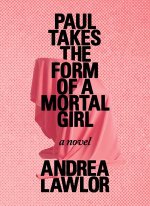 novel // lesbian // genderfluid
novel // lesbian // genderfluid
Note: The protagonist, Paul, is a shape-shifter, and the author uses he/him pronouns for Paul regardless of what shape he’s in. For this excerpt, Paul is in a woman’s body.
“They kissed more, with this dare in their heads, and then Paul couldn’t take doing nothing else, her hands all over him. He slid his hand down her workpants into the slidey packet of her, and felt some kind of jittery bursting in his own self, and she jangled out of her clothes to give his hand a better angle to get inside her and he cupped his fingers up inside her, mouth on her nipple, under her pushed-up shirt. His hands somehow knew what to do and he realized that he’d slid his entire hand inside her without asking. She squeezed his knuckles and he tried to tuck his thumb without hurting her, because of how many lectures on safe fisting, and how different could a vagina be? He wondered if she would break his hand with her throbbing and then he surrendered to the immediate need to suck on something and bent to her clit, where he felt exceedingly peaceful for a long time, sucking and slowly moving his fist, so slowly, until she began to come, or come again?, through which Paul just hung on, which seemed to be the right thing. Afterward she smiled at him and they kissed and Paul felt floppy and amped and disturbed in a way he though might be connected to not having come. Or had he? Things were very sloshy down there and had maybe changed states in some incomprehensible way. Diane was kissing him again, and again this dispelled the thinking and then somehow she had slid between his legs, pulled off his shorts, and was sucking on his girl parts through and then under his hot soaking panties, building to a violent universal bang. Then it was over, and he was just smelling crushed grass and sex and the starry night all over him.”
Abandon Me: A Memoir, by Melissa Febos (2017)
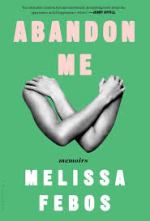 memoir // bisexual
memoir // bisexual
“The first time she asked me to come, she asked in Spanish, the Captain’s first language. It felt like a consummation. Not of love, per se, but a desire stored deep in our bodies. This, we said with our hands and teeth and tongues. This is as close as we can get to it. This is everything, and it is not enough. I understood what she had meant when she wrote that I had taken something from her. I wanted something from her that I could not name. My whole body was a mouth. My heart was a mouth that only she could fill, that she could never fill.”
“Real Woman Have Bodies” by Carmen Maria Machado (from “Her Body And Other Parties,” 2017)
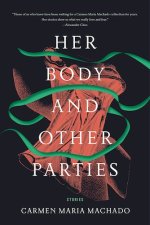 short stories // bisexual
short stories // bisexual
“You’re really beautiful,” she says into my skin. She grinds her pelvis hard against mine, and I moan, and at some point the cold charm of her necklace dips into my mouth and knocks against my teeth. I laugh, she laughs. She takes off the necklace and sets it down on the nightstand, the chain slithering like sand. When she sits up again, the ceiling fan frames her head like a glowing halo, like she’s a Madonna in a medieval painting. There is a mirror on the opposite side of the room, and I catch fragments of her reflection. “May I —” she starts, and I nod before she finishes. She puts her hand over my mouth and bites my neck and slips three fingers into me. I laugh-gasp against her palm.
I come fast and hard, like a bottle breaking against a brick wall. Like I’ve been waiting for permission.”
America is Not the Heart, by Elaine Castillo (2018)
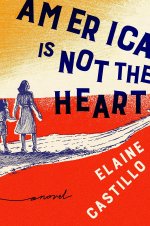 novel // bisexual
novel // bisexual
“The problem with having somewhat good sex with someone reasonably available—well, reasonably; immoderately and extravagantly available, more like—was that, once had, it was difficult not to want it all the time. It was difficult for Hero to remember that she’d spent months and months filling up her days with something that wasn’t fucking around with Rosalyn, that in fact she’d gone most of her life doing things that weren’t fucking around with Rosalyn, that she had an entire lifetime’s worth of evidence showing that it was possible to think about things that weren’t fucking around with Rosalyn—and yet. Hero found herself ignoring all the evidence in favor of spending her days thrumming, like a machine that had been left turned on and then forgotten about, leaking electricity, draining itself dry, until Rosalyn got within hand’s reach again.”
The Best Bad Things, by Katrina Carrasco (2018)
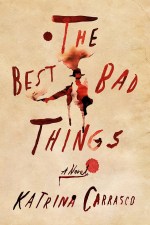 historical fiction // bisexual
historical fiction // bisexual
“Her hips are rocking into Alma’s touch. The pale ribbon whispers through each set of eyes. Nell unhooks the corset’s busks, and it falls open like a flower. She pulls off her chemise and is all bared to Alma, her skin pearly in the lamplight, silvery lines on the skin at her hips, on the skin under her navel, tracing toward the dark thatch of hair where Alma’s hand is still busy, still twisting. Alma walks her backward to the bed. Drops to her knees and replaces her thumb with her tongue. Nell moans. Hot musk in Alma’s nose, slickness on her tongue, oh, and it’s good, her mouth dripping spit, Nell’s fingers in her hair, holding her down. Her breaths come thick, fast, and god damn it, she can’t wait any longer. She kneels wider on the floor, the boards’ seams biting into her knees. Pulls her hand from the heat of Nell’s body and works it under the band of her small clothes. Fingers wet with Nell’s juices, Alma’s tongue pulsing in time with her touch, oh, yeah, it won’t take much, her body is wound tight as a watch spring.
“Let me see you,” Nell says, breath hitched. “Let me see your face.”
When Katie Met Cassidy, Camille Perri (2018)
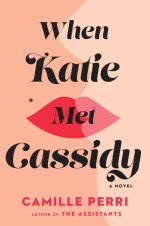 novel // lesbian
novel // lesbian
read our review of When Katie Met Cassidy
Katie ran her fingers across Cassidy’s taut stomach. “You know how you felt out there on the ranch?” she said. “Like you were out of your element?”
A trail of goosebumps followed the path of Katie’s fingertips upon Cassidy’s skin.
“That’s how I feel with you.” She traced her way down to Cassidy’s hipbones. “I don’t know how to touch you.” She glided her fingertips down the inside of Cassidy’s thigh. “But I want to.”
Cassidy kissed Katie’s neck, took her earlobe into her mouth. She whispered into Katie’s ear, “I’ll show you.”
Roller Girl, by Vanessa North (2018)
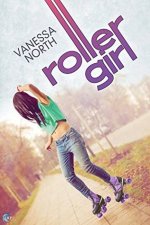 novel // lesbian // transgender
novel // lesbian // transgender
“How long has it been since I laughed with someone during sex? Have I ever? It feels good, shameless and free. She bites the side of my breast, her breath wet and hot there, then trailing slowly across to my nipple. My whole body tightens in anticipation as her lips close over my waiting flesh. I shiver, caught in the rush of heat. My limbs go lax as she draws on my nipple, again and again. One hand slides down to cup me through my pants, and instead of pushing it away, I ride her hand as another kind of pressure builds inside me.
“Yeah, rub off on me,” she whispers, “Can you come like that?”
I don’t know, but it would take an act of Congress to keep me from trying.”
Animals Eat Each Other, Elle Nash (2018)
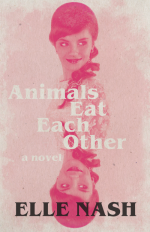 novel // bisexual
novel // bisexual
“The way I ate her was like a meal, in little parts. Jenny gave small pieces of herself away each time my tongue pressed into her. A little less of her seemed to come back with me. The places where we became one thing together like this, our open membranes raw and bleeding. The cave of her colliding into my mouth, the place where words form. The way our darks connected. I didn’t know what to think about how this felt other than we were here, alive and breathing and fucking, and maybe this is how it was supposed to be.”
Mostly Dead Things, by Kristen Arnett (2019)
novel // lesbian
read our review of Mostly Dead Things
“I kissed her to make myself forget. Forget all about it. Think only about the body how it would open for me, the thing that I needed.
She lay back on my unmade covers, still rumpled from the night before. Had me set the carapace of the cicada on the plane of her stomach, in the fallen divot between her ribs. We watched each other through the open hole of its body. I could hear the live ones screaming again outside in the trees, high and shrill. When my mouth touched the opening to her body, her chest rose abruptly. The cicada rolled forward, ready for flight.”
Long Live the Tribe of Fatherless Girls, by T Kira Madden (2019)
novel // lesbian
read our review of “Long Live the Tribe of Fatherless Girls”

“I pull her pants down to her knees and push my face into her and taste what I want to taste. I fuck her with my hand. Relax, she says. I’m the one who tops here.
Jane tries to flip me over, but I don’t want her to touch me. As if by reaching inside me she will find the very pith of my fraudulence. I have a UTI, I lie, crushing my hips into her leg.
Sometimes I jerk off thinking of you, she says.
I come when she says this.”
A Song For You, by Robyn Crawford (2019)
memoir // lesbian

“Whitney and I held hands and got close on the dance floor, but once we started kissing, we left. We made it to the car but couldn’t wait long enough to get back to the hotel. I parked the rental car alongside the water, and before long a cop knocked on the window. We were in there naked, but the windows were fogged up so he couldn’t see much and just urged us to move along. Whitney was uncomfortable with her body, but I thought she was beautiful. I used to tell her, ‘God must have put you together piece by piece.'”
A World Between, by Emily Hashimoto (2020)
 novel // lesbian
novel // lesbian
read our review of A World Between
“Eleanor felt twenty again, with a craving like there was nothing else in her life, and pressed Leena into the air mattress as it weaved and waved with the pressure of their bodies. With Leena naked underneath her, she licked and kissed paths all over her skin, relearning the geography that once kept her up at night, gently biting the birthmark on her inner thigh, moving right on past the engagement ring as if it wasn’t even there.”
Detransition, Baby, by Torrey Peters (2021)
novel // bisexual // transgender
read our review of Detransition, Baby

“How long had she been sobbing? She didn’t want to sob, she wanted to kiss the pretty dick resting on the pad of her tongue. For the last month, she had been obsessed with Reese; all she wanted to do was get closer and closer to her. It was to the point that the phrase ‘I want to eat you up’ took on shades of the literal — digestive incorporation being the only act that Amy could imagine getting her closer to Reese than sex. Just an hour before, Amy had watched Reese brush her teeth, her long brown hair hanging loose, and her arm pistoning back and forth so hard as she brushed that her tits waggled side to side under her slinky nightgown. Amy decided it was the sexiest thing she’d ever seen, topping each of the fifty other Reese actions she’d decided one after another that day was the sexiest vision ever.”
With Teeth, by Kristen Arnett (2021)

novel // lesbian
read our interview with Kristen Arnett
“Sammie knew people always described their orgasms as cresting waves. Invoked the beauty of a starburt, or fireworks all in a row: bang, bang, bang. But for her, coming felt more like finally sitting down for a good meal after starving for weeks. The movement of it—spasms like a jaw clenching and unclenching. Like her pussy wanted to swallow everything and ask for seconds.
She fisted a hand in Myra’s hair and rode out that first big one. If Myra kept swirling her tongue like that, she might come again. Then it would be like having leftovers. Just thinking about that way led to her next orgasm. She yelled a word that almost sounded like fuck, and tightened her grip until she knew there’d be strands of Myra’s hair twined between her fingers when she let go. She almost came a third time, but she was spent, it was done, and when she finally let go and Myra sat up, smiling, she saw blood ringing the other woman’s mouth.”
Skye Falling, by Mia McKenzie (2021)

novel // bisexual
“Back in my room, we lie on the bed and kiss. And kiss. And kiss. I cannot get enough of Faye’s mouth, of the taste and smell of it, of the way her lips feel against mine. I could lie here with her tongue in my mouth for the rest of my life. But after a few minutes of kissing, she climbs on top of me. She sits up, so she’s straddling me, then she pulls me into a sitting position, too. She tugs at my shirt and, as I raise mu arms, she pulls it over my head. This is when I realize I’m still wearing my emergency bra and begin to scream internally.”
You Exist Too Much, by Zaina Arafat (2021)
 novel // bisexual
novel // bisexual
read our interview with Zaina Arafat
“After climbing into bed the night before, I’d woken her up the way I knew she liked, pressing my nose against her neck and breathing deeply until the vibration roused her. I then switched up our usual roles, pulling myself on top of her while at the same time scooting her beneath me.”
Yerba Buena, by Nina Lacour (2022)

novel // lesbian
read our review of Yerba Buena
“Sara took a woman home that night, something she rarely did, though the offers tumbled forth with every night she worked the bar. She was practiced in the art of being just friendly enough, of the gentle rejection, of the absolute no when it was required. But that fantasy—cupping Emilie’s cheek and drawing her closer—wouldn’t let Sara rest. So when a woman stayed late, past the time her friends left, past everyone else, Sara gave in. They had sex on the sofa in Sara’s small living room. The woman came quickly, and Sara felt a burst of tenderness for her—Christa or maybe Christine? It had been loud in the bar when she’d told her—but soon, emptiness came rushing in. That inevitable feeling. The reason no relationship lasted very long.”
Our Wives Under the Sea, by Julia Armfield (2022)

novel // lesbian
read our review of Our Wives Under the Sea
“Sex with Leah was a key and a lock, an opening up of something I had assumed impassable, like a door warped shut by the heat. Joy in the fact of pleasure, in the fact of my own relief. When we fucked, I felt myself distinct from my previous versions: the frenzied me, the panicked me, the me who had imagined herself poisoned by something she had never even done.”
Body Grammar, by Jules Ohman (2022)

novel // queer
read our review of Body Grammar
“It felt heady and strange to be kissing someone she didn’t know well but was extremely attracted to. Her body hummed as Thayer took off her shirt and peeled down her jeans, then lay there, looking up at Lou. Lou asked what she wanted, and Thayer told her. Lou didn’t know what to do, but she knew how to follow directions. She could put her mouth there and there and there, and she could move her tongue like that and that, and she could do everything that was asked of her, especially if she was asked like that, and it turned out she could it all well, like really well. Thayer smelled and tasted delicious and Lou was so hungry, and as soon as it was over, she wanted to do it again.”
We Had to Remove This Post, by Hanna Bervoets (2022)
 novella // lesbian
novella // lesbian
“Later, during the spell when Sigrid and I didn’t see each other for a while, I would nonetheless evoke that kiss when I was masturbating, and over time my memory of the fantasy has become clearer than my memory of the night itself. In that fantasy Sigrid won’t stop staring at me. She uses every excuse to touch me, deliberately pressing into me as she leans over to grab another beer off the tray. In the fantasy, I reach out and put a hand on her thigh; she, in turn, shakes her head and flushes red, and then I get up to go to the restroom and she follows me. She tugs at my shoulder to turn me toward her and I push her up against the wall. We’re blocking the hallway to the restrooms, which is too narrow as it is—by the time our lips touch I’ve usually already come, and if not, I switch to a different memory, an image from a few weeks later: We’re in my bed and Sigrid is straddling me, “Deeper, deeper,” she cries, her face contorted with pleasure and yet vaguely mournful, and the memory of that grimace—ugly and hot at the same time—tends to get me there right away.”
Helen House, by Kayla Kumari Upadhyaya (2022)
 novella // lesbian
novella // lesbian
read our review of Helen House
“When she found out about the promotion, we’d gone out for Korean BBQ. Later in bed, I could still smell the smoke in her hair, and it made me hungry for her. I mean, sure, I was always hungry for her. But that smoky smell was like a spell, and I asked her to put on the harness I usually wore, watched her fumble with its buckles and straps without offering any assistance, my hunger deepening when she whispered, Like this?“
All This Could Be Different, by Sarah Thankam Mathews (2022)
 novel // lesbian
novel // lesbian
read our review of All This Could Be Different
“I touched the Kia Soul’s gear stick. Get naked, I said. Then put your mouth on this.
A look of uncertainty flashed across her face. Still, she complied. Contorting her torso to stay perched on me. Her generous lower lip and its slender tremulous companion, pink shot through with brown. Her mouth, parting.
Pleasure this, I said, taking in the bemused look in her eyes, feeling the vague gathering mists of foolishness—and of course, real wild desire is braided tightly with foolishness, with all that is awkward and stilted. I had to work against this. To safeguard the moment, which still felt savable, felt swollen with blood and heat.
Pleasure it, I said, as if it were my cock.“
Pretty Baby, by Chris Belcher (2022)
memoir // lesbian

“Sam and I spent two weeks sweaty fucking for hours a day in her mom’s two-bedroom, one-bathroom trailer without air-conditioning. We barely left except to walk to McDonald’s or Subway, where I would order double and eat until I felt sick. The sex made me ravenous, but I hated leaving Sam’s bedroom, tiptoeing out past her mom, into the kitchen. She looked up at me from her recliner like she could smell her daughter on me, and surely, she could.”
Sirens & Muses, by Antonia Angress (2022)
 novel // bisexual
novel // bisexual
“At first they only hooked up in Louisa’s studio, late at night when the building was empty and silent, but after a few days they began having sex in their room, as well. It was surreal, Louisa thought sometimes: there were her posters on the wall, and there was her green plastic shower caddy, and there was her towel on its hook, and here was Karina’s pale pink nipple in her mouth, and here were Karina’s fingers moving inside her, and here was Karina’s tongue on her neck, and here—”
We Do What We Do in the Dark, by Michelle Hart (2023)
 novel // lesbian
novel // lesbian
read our review of We Do What We Do in the Dark
“Mallory turned toward the woman and kissed the woman’s shoulder, her neck, her lips. They kissed for while before the woman went to lie back on the bed, reaching her hand into her underwear to rub herself, soft and slow. Her eyes were closed. Mallory, still seated beside the woman but looking down at her, understood that the woman wanted to be watched doing this too, so that was what Mallory did: watched.
Almost as a reflex, Mallory, who’d taught herself to masturbate by watching other women do it in porn, began to mirror the woman’s movements on herself. She felt her own wetness and fell back next to the woman. The two of them moved like this, alone and together. Their breaths became heavier and heavier until the woman whispered, ‘Do you want to touch me?’ Mallory said yes, and the woman took Mallory’s hand in hers, bringing it between her legs. The woman, using Mallory’s hand to rub herself, opened her legs wider, and Mallory sat up to kneel between them. A low moan trembled in the woman’s throat. The woman removed her own hand and Mallory continued. ‘Yes,’ the woman said. ‘Like that.’ It was as if she was teaching Mallory to draw.”
Dykette, by Jenny Fran Davis (2023)
 novel // lesbian
novel // lesbian
“Sasha fell forward, as though by accident, collapsing into Jules. Pressed into the shoulder of Jules’s royal purple hoodie, she took a deep drag and closed her eyes. It was a sad smell, a smell of the past, a past that isn’t quite gone. Jules arranged her arms around Sasha and pulled her in. The pressure of their bodies together made Sasha so wet that she wondered if she was somehow already coming. They stayed like that for a few minutes, and then she wedged her right knee into Jules’s crotch, gently, again like an accident. Jules’s big body gave in almost immediately, her groin warmly accepting Sasha’s knee, sucking her knee into its micro-climate, and Sasha felt Jules’s wetness through Jules’s jeans and through her own black tights.”
Big Swiss, by Jen Beagin (2023)
 novel // queer
novel // queer
read our review of Big Swiss
“Her pussy looked like advanced oragami. A crisp pink lotus flower folded by a master. Greta briefly rearranged it with her mouth. The flower transformed into an acorn. Then a unicorn. Then back again. Greta dragged her tongue over it diagonally three dozen times. Now it resembled two dragonflies languidly mating on a lily pad.”
The Fake, by Zoe Whittall (2023)
 novel // lesbian
novel // lesbian
read our review of The Fake
“Shelby remembers when she and Kate were like that, when even if they were only driving an hour out of town they’d have to stop and have sex in the car on some side road, the bruises on her shins she’d have later that she liked to look at.”
Your Driver Is Waiting, by Priya Guns (2023)
 novel // lesbian
novel // lesbian
read our review of Your Driver Is Waiting
“‘Wait, wait. There’s no one here,’ she said between gasps, still grinding on my face. She opened the door and got out, pulling at me to follow her. She wasn’t afraid of showing me how much she wanted me. She walked around to the front of my car, and bent herself over the hood, before reaching down to touch her pussy. Fuck. Of course I was falling for her. She leaned against the car, my car, with come-get-me eyes.
‘Is this okay? Can I do this?’ asked Jo.
I leaned towards her, wrapping my leg around her, bringing her closer with my arm, then I kissed her neck. We were naked and maybe someone was watching but I didn’t think about it. Our bodies were close, and we rocked, finding each other’s rhythm. She bit my neck harder and scratched at my back, but I kept going until she was limp and shuddering in my arms.”
Homebodies, by Tembe Denton-Hurst (2023)
 novel // lesbian
novel // lesbian
“‘Okay, I’m sorry,’ Lex whispered against her flesh in a voice deeper than normal and Mickey felt the hum of desire rising in her skin. They loved to make up by fucking, some of their best, most spontaneous sex happened that way. The kind of sex they had when they first fell in love, and it reminded her that she could still feel that way, even after all these years.
‘I need a better apology than that.’
‘How do you want me to show you?’
Mickey hopped up on the countertop and opened her legs.”
Read All Of The Books: The Fall 2013 Queer Books Preview
feature image via Shutterstock
by Carolyn & Mey
The fall is looking good for queer reading! Books look out for include new work from Jeanette Winterson, S. Bear Bergman, Nicola Griffith, Malinda Lo, Julia Serano, Radclyffe, Kathleen Warnock and a ton of other heavy hitters. With forthcoming history and historical fiction, erotica and academic analysis, literature and genre fiction, and Buffy and Batwoman, you won’t have any problems finding something new to read.
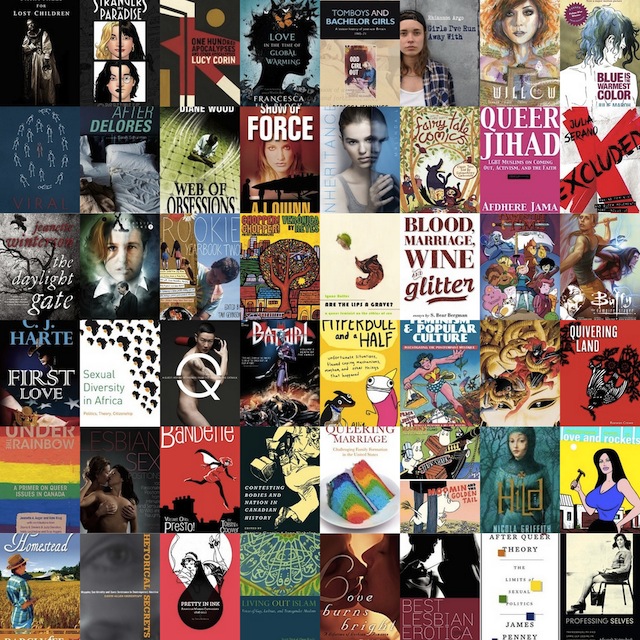 August
August
One Hundred Apocalypses and Other Apocalypses, by Lucy Corin: The series of short stories in this new collection explore endings and new beginnings, whether of relationships or of the world. Corin uses an experimental style, varying lengths, type size and tone, to muse “not just on the end of the world, but the rapture of existence.”
Love in the Time of Global Warming, by Francesca Lia Block: Block’s writing has a dream-like quality and her unique voice — best known in her queer-friendly children’s book, Weetzie Bat, is at full force in her latest YA novel. When Penelope’s family are swept away in a flood, she embarks on an Odyssey-like quest to find them and encounters sirens, witches, magic and love.
Tomboys and Bachelor Girls: A Lesbian History of Post-War Britain 1945–71, by Rebecca Jennings: Jennings explores lesbian identity and culture in post-war Britain. Using oral histories and archival sources, she illuminates Britain’s lesbian social scene, both in London nightclubs and also in magazines and organizations across the country, in contrast to the conventional picture of post-war austerity.
September
Fairytales for Lost Children, by Diriye Osman: A series of narrators — young lesbian and gay Somalis on the edge of self-revelation — navigate family, identity and place in this collection of short stories that defy categorization. Alison Bechdel writes of the collection, “The characters in these fairy tales are displaced in multiple, complicated ways. But Osman’s storytelling creates a shelter for them; a warm place which is both real and imaginary, in which they find political, sexual, and ultimately psychic liberation.”
Girls I’ve Run Away With, by Rhiannon Argo: Sister Spit’s Rhiannon Argo (who Laneia once interviewed) founded Moonshine Press through an Indiegogo campaign in order to publish Girls I’ve Run Away With. Lo Flynn falls in love with rebellious Savannah Blanco and they go on the run while facing coming out, dysfunctional families, being kicked out, mental health issues and more.
Strangers In Paradise Omnibus, by Terry Moore: This is the ultimate collection for any fan of one of the most groundbreaking series for lovers of lesbian and queer characters in comic books. This edition contains all 107 issues of the series, including all of the spin offs. Moore’s masterful art and storytelling are at their highest levels in this two-book package.
Willow Volume 1: Wonderland, by Jeff Parker, Christos Gage and Brian Ching: Everyone’s favorite lesbian witch from Buffy is back in her own title, setting off on her own on a quest that will lead her to finding old allies and new battles. Magic has disappeared from the world and Willow is determined to get it back, no matter how dangerous the journey might be or where it might take her.
Blue is the Warmest Color, by Julie Maroh: First published in French as Le bleu est une couleur chaude, Blue is the Warmest Color is the English translation of the graphic novel recently adapted into the film that won the Palme d’Or at the 2013 Cannes Film Festival. Clementine discovers the power of love when she meets the blue-haired Emma in a lesbian bar. Their relationship challenges Clementine’s ideas about herself and her identity.
Viral, by Suzanne Parker: Parker’s slim book of poetry offers a response to Tyler Clementi‘s tragic suicide that explores sexuality, masculinity and shame. Carol Muske-Dukes calls the poems “relentlessly tender, impossibly empathetic […] which echo and clarify the body of grief.”
After Delores, by Sarah Schulman: Schulman’s acclaimed 1988 novel about an unnamed New York waitress recovering after her girlfriend, Delores, leaves her appears in a new edition from Arsenal Pulp Press. After Delores is as much a sexy novel about heartbreak as it is a look into the Lower East Side’s lesbian culture in the 1980s.
Web of Obsessions, by Diane Wood: Jordan Mackenzie is a social worker in a women’s prison when she meets assistant superintendent Danielle Veillard. Her ex-girlfriend and Danielle’s ex-husband stand in their way as begin a romance, and a prison drug ring and mysterious death make the stakes even higher.
Show of Force, by A.J. Quinn: Correspondent Tate McKenna brings navy pilot Lieutenant Commander Evan Kane home after an embassy dinner and the two can’t imagine separating again — even if it means risking their lives. Following Quinn’s romantic suspense novel Hostage Moon, Show of Force promises to be a one-sitting read.
Inheritance, by Malinda Lo: The sequel to Adaptation, Lo’s young adult contemporary sci-fi thriller, continues to follow Reese Holloway as she deals with being implanted with alien DNA, government conspiracy and her feeling for her ex-girlfriend Amber and her best friend David. Inheritance explores sexuality, adolescence and “the other.” (Read Autostraddle’s interview with Lo on Adaptation.)
Batwoman Vol. 3: World’s Finest, by J.H. Williams III: The only lesbian superhero to have her own title at one of the major comic book publishers is back in action as she partners up with the most iconic of all lady superheroes, Wonder Woman. Not only do you get to see two of DC’s coolest ladies teaming up to fight mythological monsters, but also Batwoman takes some serious steps forward in her relationship with a fellow crime fighter.
Fairy Tale Comics: Classic Tales Told by Extraordinary Cartoonists, edited by Chris Duffy: This book features classic fairy tales, some familiar and some new, retold in comic book form by a super talented group of people including queer comic-maker Emily Carrol, Love and Rockets creators Gilbert and Jaime Hernandez, and Jillian Tamaki, the illustrator of Skim.
Queer Jihad: LGBT Muslims on Coming Out, Activism, and the Faith, by Afdhere Jama: Jama, author of Illegal Citizens: Queer Lives in the Muslim World, explores individual and group efforts to reconcile sexuality and faith. He discusses the post-9/11 West, law in the East, the new generation of queer Muslims, voice, change and rights.
October
Excluded: Making Feminist Movements More Inclusive, by Julia Serano: “Julia Serano is a careful and astute critic of the ways that trans women have been stereotyped and dismissed in popular culture, feminism, and psychology,” says Patrick Califia on the back of Whipping Girl. In Serano’s newest book, Excluded, she details how feminist and queer movements police gender and sexuality at the same time as challenging sexism, and how to foster inclusivity.
The Daylight Gate, by Jeanette Winterson: Lambda-Award-winning author Winterson is best known for Oranges are Not the Only Fruit and Written on the Body. Her new novel, set in seventeenth-century England, centers on the 1612 witch trials and a dark, paranoid moment in history.
Rookie Yearbook Two, edited by Tavi Gevinson: The second book from Rookie, an online magazine for teenage girls, isn’t just for those of us still in high school. Contributors include Judy Blume, Grimes and Mindy Kaling as well as interviews with people like Emma Watson and Carrie Brownstein. Yearbook Two collects the best of the website from its second year and is perfect for teens or anyone who remembers being one.
X-Files Classics Vol. 2, by Charlie Adlard and others: Although it’s not explicitly queer, it’s hard not to have a special spot in our hearts for FBI agent and medical doctor Dana Scully. This book features stories that were not featured in the TV show or movie and can only be found in the comics, including “Feelings of Unreality,” “Home of the Brave” and “Night Lights.”
Chopper! Chopper! Poetry from Bordered Lives, by Verónica Reyes: “Reyes resurrects old-time shops and hangouts. They memorialize the land alongside edifices of refuse, sterile towers, man-made deserts and rivers, machines that suffocate the sky, fields locked in the historical cycle churning out the fieldworker’s woe. Queers, dandies, cholos, mariachis the same as ‘Chumash, Pomo, Modoc’ ramble these streets,” writes Kristin Naca of Reyes’s new collection of poetry, which captures the lives of immigrants, Mexican Americans, Chicanas/os and la jotería.
Are the Lips a Grave?: A Queer Feminist on the Ethics of Sex, by Lynne Huffer: Balancing current debates around both queer and feminist theories, Huffer — also the author of Mad for Foucault: Rethinking the Foundations of Queer Theory — looks at queer sex, sodomy laws, interracial love, porn and work-life balance to rethink ethics and sexual morality.
Blood, Marriage, Wine and Glitter, by S. Bear Bergman: Bergman’s earlier books — Butch is a Noun, The Nearest Exit May Be Behind You, and Gender Outlaws: The Next Generation (co-edited with Kate Bornstein) — are all seminal texts on gender and trans* life and issues. In Blood, Marriage, Wine and Glitter, Bergman considers different ideas of family from all perspectives with a voice that is both honest and hilarious.
Adventure Time: Fionna & Cake, by Natasha Allegri: This is the first trade paperback of comics based on the fantastic genderbent Adventure Time episodes. Fans of the show will love this comic illustrated and written by storyboard artist and Fionna & Cake creator Allegri.
Buffy The Vampire Slayer Season 9 Vol. 4: Welcome to the Team, by Andrew Chambliss, Georges Jeanty, Karl Moline, Dexter Vines and Andy Owens: The second comic book-only season of the series that helped a lot of us figure out our queer feelings continues with Buffy fighting off a horde of zombies before being recruited to join a team that’s planning on taking down one of the most powerful enemies she’ll have to face — the Siphon.
First Love, by C.J. Harte: Harte’s novels thrive equally on romance and drama. In her latest, Jordan Thomson, daughter of the president of the United States, hires Drew Hamilton, once and future rancher and current medical student, as a tutor. Both women learn more than they expected.
Sexual Diversity in Africa: Politics, Theory, Citizenship, edited by S.N. Nyeck and Marc Epprecht: The contributors in this volume of essays discuss contemporary debates on and issues around sexuality and gender identity. Same-sex networks, ex-gays, pseudo-scientific gay “cures,” the “kill the gays” bill in Uganda, relationship dynamics between women who sleep with women, Caster Semenya and nationalism all show the problems with oversimplified discussions of heterosexuality and homosexuality, Africa and the West and the closet and being out.
A Queer History of Fashion: From the Closet to the Catwalk, edited by Valerie Steele: As the director and chief curator for the Museum at the Fashion Institute of Technology, Steele has been called one of “Fashion’s 50 Most Powerful” by the New York Daily News. Her new book talks about gay designers, fashion and style within the queer community and more to show the impact of gay culture on modern fashion.
Batgirl Vol. 3: Death of the Family, by Gail Simone and Ed Benes: Collecting issues #14 to 19 of Batgirl, as well as Batman #17, Batgirl Annual #1 and a story from Young Romance #1, this run features Batgirl facing off against not only the Joker, but also against her dangerous brother. This is also the run of the series where Batgirl’s roommate Alysia Yeoh comes out as transgender.
Hyperbole and a Half: Unfortunate Situations, Flawed Coping Mechanisms, Mayhem, and Other Things that Happened, by Allie Brosh: The long-awaited book from acclaimed graphic humor blog Hyperbole and a Half includes half unpublished content and all hilarity. The book chronicles cake eating, owning one neurotic dog and one mentally challenged one, depression, anxiety and more, all illustrated in MS Paint in Brosh’s signature style.
Feminism and Popular Culture: Investigating the Postfeminist Mystique, by Rebecca Munford and Melanie Waters: There is often a troubled relationship between pop culture, feminism and post-feminism. Munford and Waters discuss Mad Men, Homeland, The Stepford Wives, American Horror Story and more to highlight the characters within the postfeminist landscape. They show how pop culture relates to feminist debates and explore the implications for the future.
November
Homestead, by Radclyffe: Best-selling lesbian author Radclyffe is nothing if not prolific. In her latest, Tess Rogers learns her to-be-inherited six hundred acres of farmland has been leased to an oil and gas company. Tess resists the takeover, much to the chagrin of R. Clayton Sutter, who is in charge of making the new refinery operational.
Love and Rockets: New Stories, Vol. 6, by Gilbert and Jaime Hernandez: One of the forerunners in the alternative comics revolution and one of the earliest comic series to feature queer women of color, Love and Rockets continues with more stories of the several generations of Latina characters that we’ve come to know. Los Bros Hernadez’s distinctive stylized illustration and magical realism storytelling style is showcased once more in their latest graphic novel.
Asexualities: Feminist and Queer Perspectives, edited by Megan Milks and Karli June Cerankowski: “I also wish I’d known that it’s totally okay to feel passion and desire and pleasure in ways that don’t appear sexual. To feed other parts of yourself,” says Eliot in an interview with the Hairpin. This first-ever collection of critical essays on asexuality looks at its feminist and queer politics. Authors consider gender, race, disability and medical discourse to challenge ideas about gender and sexuality as they relate to desire, bodies and sexual practice.
Hild, by Nicola Griffith: “Hild is not just one of the best historical novels I have ever read — I think it’s one of the best novels, period,” says Dorothy Allison, author of Two or Three Things I Know for Sure. Hild is set in seventh-century Britain and focuses on the girl who would become St. Hilda of Whitby, who establishes herself as the seer to a ruthless king who finds her indispensable — until he doesn’t.
Moonin’s Desert Island and Moonin and the Golden Tail, by Tove Jansson: From Swedish-speaking Finnish lesbian author Tove Jansson, these comics in the beloved series are being released fully colored for the first time. Jansson’s fantastical and heartfelt story telling combines with her simple yet whimsical illustrations in these stories of a group of trolls and their friends on various adventures.
Queering Marriage: Challenging Family Formation in the United States, by Katrina Kimport: Legal same-sex marriage is often seen as either a challenge to heterosexual privilege or as a way to preserve that privilege through assimilation. Using a series of interviews with queer spouses, Kimport reconciles both views to show how gay marriage and reinforce and disrupt traditional ideas about marriage and sexuality.
Contesting Bodies and Nation in Canadian History, edited by Patrizia Gentile and Jane Nicholas: Gentile’s first co-written Canadian queer history book, The Canadian War on Queers, explored sexuality and gender identity — and oppression — in Canada during the Cold War. Now, Gentile and Nicholas explore the history of the body as a site of contestation in Canada. Contributors address health and medicine, consumerism and fashion, citizenship, work and more.
Bandette Volume 1: Presto!, by Paul Tobin and Colleen Coover: Illustrated by the amazing bisexual artist Colleen Coover, this Eisner-nominated series is about costumed teen thief Bandette and her adventures in Paris. She and her friends can be found dodging the police, pulling off major heists and having fun while fighting for justice. That is, before Bandette finds out that an international criminal organization wants her dead.
Lesbian Sex Positions: 100 Passionate Positions from Intimate and Sensual to Wild and Naughty, by Shanna Katz: Sexologist and sex educator Katz is a self-described queer kinky disabled feisty femme and “professional pervert” involved with numerous sex-positive organizations and equality and social justice work. In this full-color guide, Katz explores old and new ways to make sex fun, step by step.
Under the Rainbow: A Primer on Queer Issues in Canada, by Jeanette Auger and Kate Krug: Canada has long been known as a generally queer friendly society. Auger and Krug discuss its social and political history and contemporary issues in queer Canadians’ lives. They also talk about social constructions of identities, law and politics, Quebec and queerness, trans* issues, education, sports, aging, health, end-of-life decisions and more.
Quivering Land, by Roewan Crowe: Among other projects, Crowe is involved in an ongoing collaboration with Michelle Meagher that explores new feminist art practices. In her literary debut, Crowe conducts a queer literary experiment in which she questions what it means to be a queer feminist artist and settler in a landscape reminiscent of the Hollywood Western.
December
Rhetorical Secrets: Mapping Gay Identity and Queer Resistance in Contemporary America, by Davin Allen Grindstaff: Looking at language and rhetoric, Grindstaff looks at persuasion and gay identity construction. He chronicles sexual identity as a secret as a strategy of heteronormative discourse before examining issues related to contemporary identity.
Pretty in Ink: American Women Cartoonists 1896-2013, by Trina Robbins: Tracing more than 100 years back into the history of cartoons and comics, this new book from Trina Robbins covers artists from Rose O’Neill at the end of the 19th century, to a Native American women cartoonist in the 40s, to alternative comic creator Lyda Barry to modern women in comics like Alison Bechdel and Kate Beaton. This book is full of incredible stories and beautiful art.
Living Out Islam: Voices of Gay, Lesbian, and Transgender Muslims, by Scott Siraj al-Haqq Kugle: In Living Out Islam, Kugle uses interviews with gay, lesbian and transgender Muslims living in secular democratic countries to demonstrate the importance of support groups and solidarity in changing social relationships. He goes beyond the idea of the closet to show interviewees’ ways of living out Islam with integrity; reconciling faith, gender and sexuality; and reclaiming Islam for their themselves.
Love Burns Bright: A Lifetime of Lesbian Romance, edited by Radclyffe: A new collection compiled by Radclyffe looks at lesbian love from the first kiss to the first night to the love that goes on many years later. Contributors include Andrea Dale and many more.
Best Lesbian Erotica 2014, edited by Kathleen Warnock: Cleis Press’s annual erotica collection returns with an introduction by Sarah Schulman, co-founder of the Lesbian Avengers.
After Queer Theory: The Limits of Sexual Politics, by James Penney: Penney, author of The World of Perversion: Psychoanalysis and the Impossible Absolute of Desire, has written extensively on queer theory. However, in his latest book, he says it’s dead. Using a critical look at Marxism and psychoanalysis, Penney argues that the best way to include sexuality in political antagonism is to toss aside the idea of politicized sexuality.
Professing Selves: Transsexuality and Same-Sex Desire in Contemporary Iran, by Afsaneh Najmabadi: “Najmabadi brings her nuanced understanding of multiple discourses and institutions in Iran to bear on the recent and remarkable visibility of transsexuality in that country. Professing Selves […] will be the definitive text on its topic for a long time to come,” writes Susan Stryker, author of Transgender History. In what promises to become a crucial text, Najmabadi uses history and ethnography to discuss the post-revolutionary era, law, psychology and psychiatry, Islamic jurisprudence, biomedicine, and transsexual and homosexual categories in contemporary Iran.
See The Fascinating Evolution of Cover Art From 12 Legendary Queer Books
1. Orlando, by Virginia Woolf (1928)
There are approximately ten bajillion English-language editions of Orlando from a number of different publishers, and most aren’t straight-up reprints. It seems each publisher took their own approach to conveying the book’s subject matter — generally by not conveying anything at all.
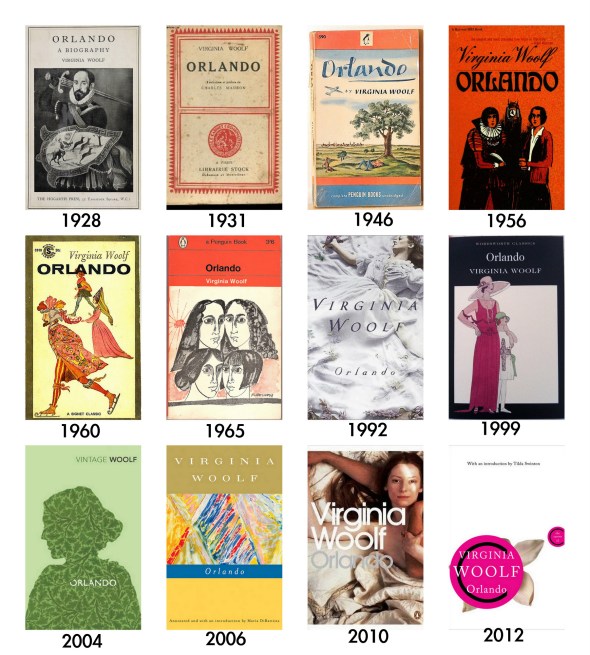
2. The Well Of Loneliness, by Radclyffe Hall (1928)
This is one of the most depressing and the most controversial books of all time, which means it had to suffer through an obscenity trial and other legal actions, including customs seizures, in the U.S. and Britain, before it could be sold openly. The 1951 cover, which features women dressed like it’s the ’50s even though the book took place decades earlier, describes its contents as “the strange love story of a girl who stood midway between the sexes.” The 1974 edition tried a little harder to be true to the time period, but the ladies are in heavy makeup wearing historically inaccurate costumes. After a 1981 foray into the wilds of terrible/AWESOME, it seems in the ’90s they abandoned attempting to picture actual lesbians on the cover and began using fine art instead. Personally I feel a more accurate cover would be a picture of me stabbing my eyes out with DON’T READ THIS BOOK in large block letters over my face.
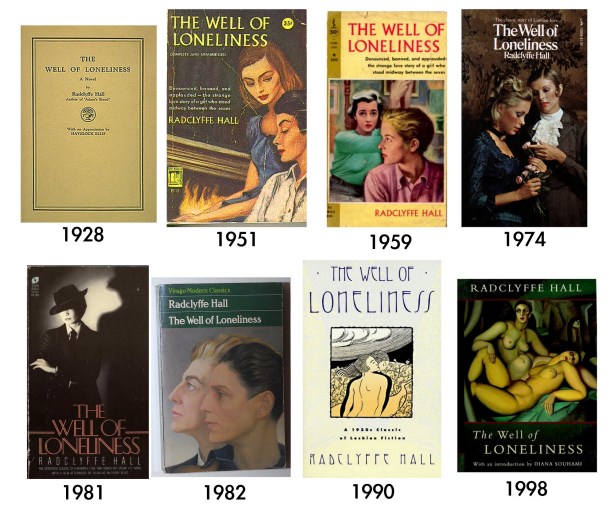
3. The Price Of Salt, by Patricia Highsmith (1951)
Patricia Highsmith, best known to the masses as the author of the book that became The Talented Mr. Ripley, published her lesbian novels under the name “Claire Morgan.” As time passed and it became okay to be gay, Highsmith’s novels were printed using her real name. International editions and the most recent English-language version I could find use a different title, “Carol,” the love interest of the book’s protagonist (Therese).
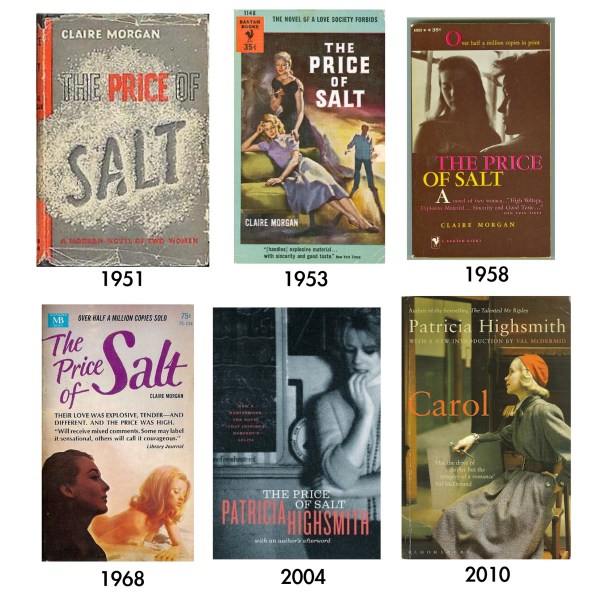
4. Rubyfruit Jungle, by Rita Mae Brown (1973)
Tiny feminist press Daughters Publishing Company produced the first edition of this novel, which caught the eye of Bantam Books, who reprinted Rubyfruit Jungle in 1977, where it became the first mainstream U.S. besteller with lesbian themes. Honestly, I still like the 1973 cover the best.
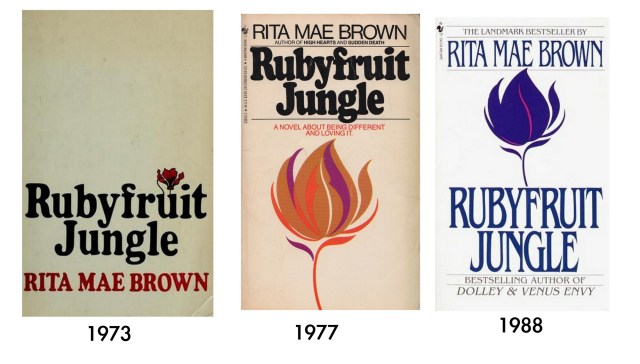
The American versions throughout history are coy about the subject matter, to say the least. Overseas, things were a little more direct.
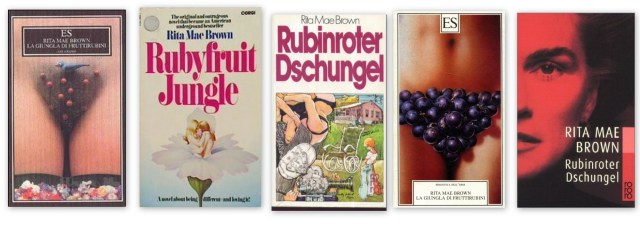
5. The Color Purple, by Alice Walker (1982)
Then 1985 cover comes from the film, and the 2006 cover from the Broadway musical. AS per ushe, I like the first one the best.
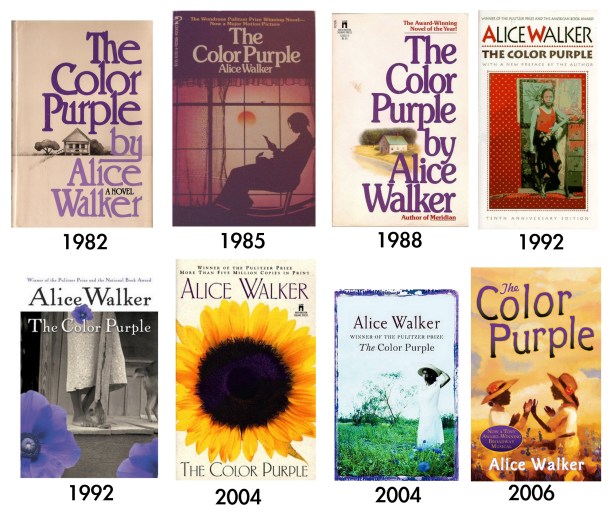
It seems like in the international editions, publishers were more eager to put heads, rather than flowers, on the cover:
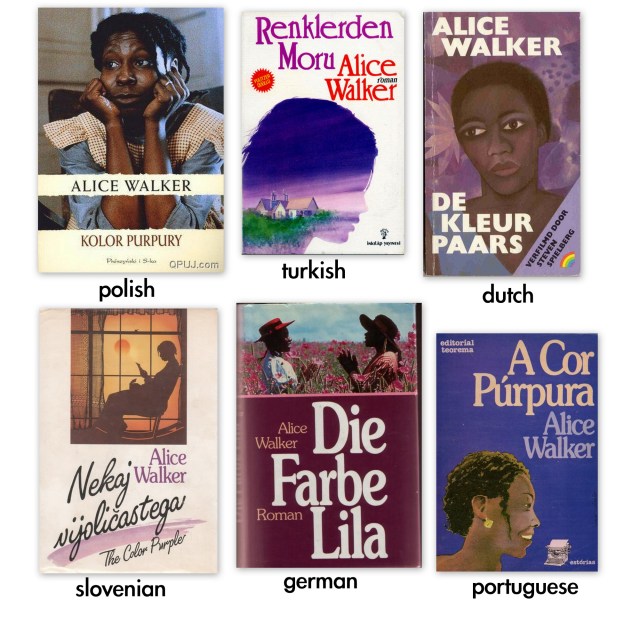
6. Annie on My Mind, by Nancy Garden (1982)
Nancy Garden hated the first cover designed for Annie on My Mind, which pictured Liza and Annie on the Esplanade in Brooklyn, with Liza standing away from Annie. Garden said, “it really looks as if Annie is going to swoop down on Liza — almost like a vampire attacking.” She didn’t like the next cover design either, because she wanted to see “the two girls really relating to each other equally.” Finally she got what she wanted, ten years later.
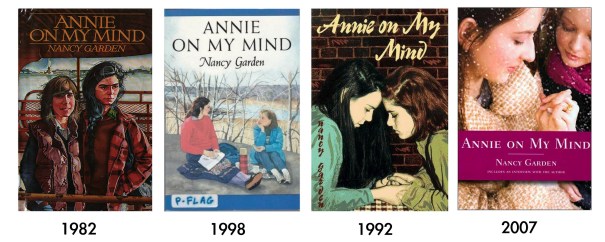
7. Sister Outsider, by Audre Lorde (1984)
The Crossing Press in California, founded in 1963, published Sister Outsider back in 1984 and featured a photograph of Lorde, taken by Salimah Ali. Crossing Press was purchased by Ten-Speed Press, a Berkeley-based press founded in 1971, in 2002, which was subsequently purchased by Crown Publishing, a division of Random House.
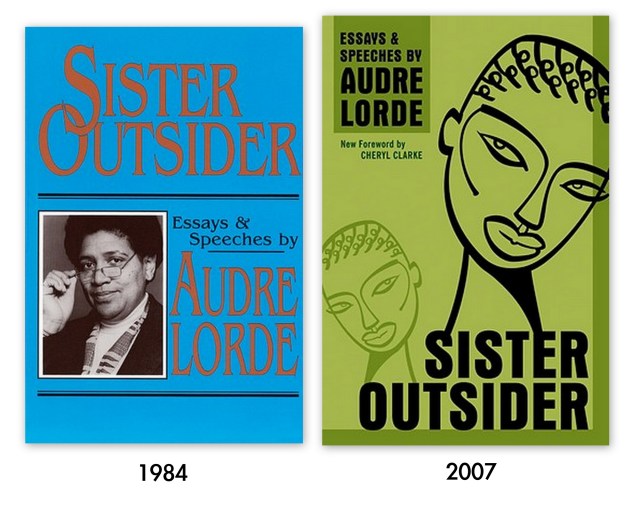
8. Oranges Are Not The Only Fruit, by Jeanette Winterson (1985)
Anita Kuntz illustrated the picture on the cover of the 1987 edition, and Olaf Hajek illustrated the second 1997 cover illustrated below. Hajek also designed the covers for relaunches of Winterson’s Sexing the Cherry and The Passion. The 2011 cover is part of Vintage 21, 21 books released by Vintage to celebrate their 21st birthday and if you buy all 21, you will have a beautiful rainbow on your bookshelf.
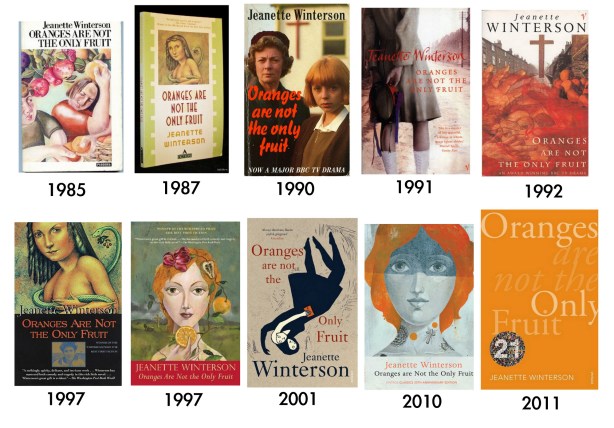
9. The Gilda Stories, by Jewelle Gomez (1991)
The woman pictured on the original cover is Gomez’s great-aunt Effie. Although Gomez never met Effie, she recalls that her great-grandmother heard Effie’s voice calling to her after she died, a story which Gomez says “shaped my writing forever.” The new edition hints more strongly at the book’s content: VAMPIRES!
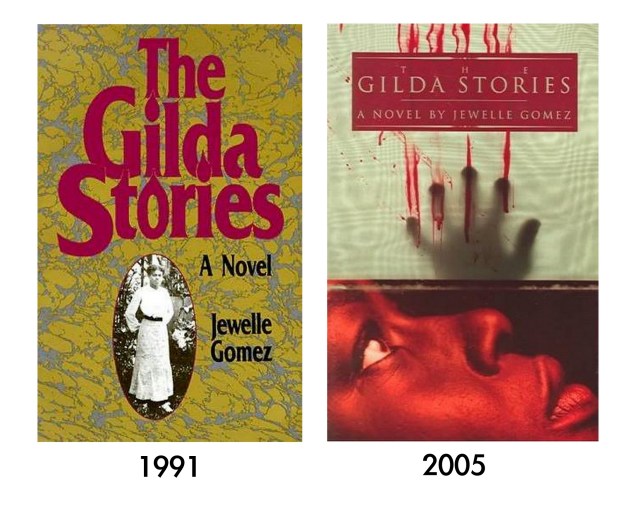
10. Bastard Out of Carolina, by Dorothy Allison (1992)
The 1993 Flamingo imprint is super-weird, it looks like a book about a teenage pyromaniac. I’d like to conference with whomever signed off on that one. The 2012 20th Anniversary Collection cover, though, is pretty awesome, and the cover art is the work of queer lady Jessica Sabogal, “a first generation Colombian American graffiti artist, hip-hop dancer, toymaker, and photographer.”
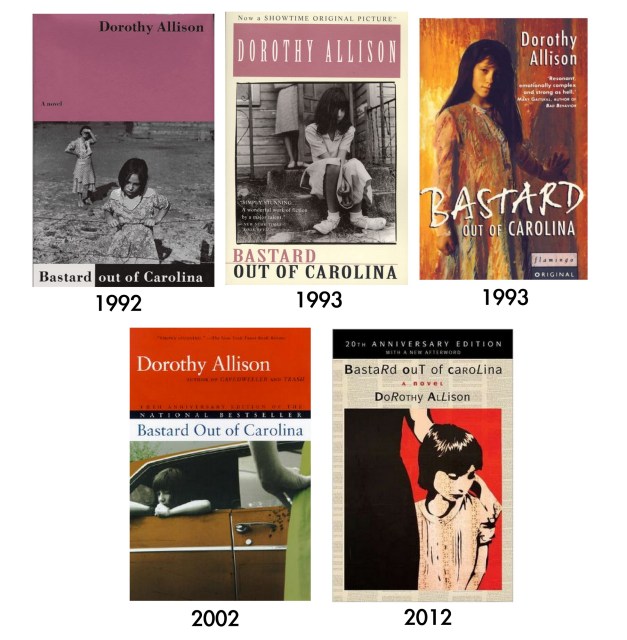
I also really like the French cover:
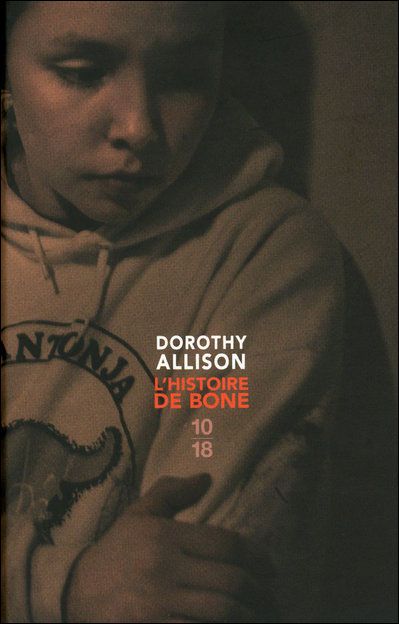
11. Stone Butch Blues, by Leslie Feinberg (1993)
It’s really interesting that they chose to go from a younger picture of the author to an older one with the new edition, even though the narrator, I presume, remains the same age. It really serves to bring the author’s whole life to bear upon the book.
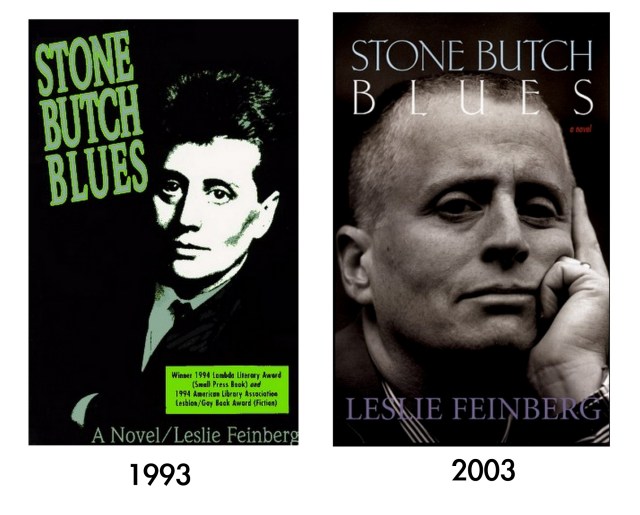
My favorite take on it is actually the Chinese cover from 2006:
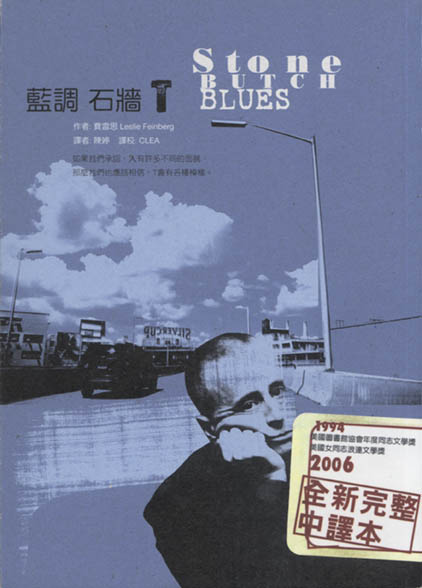
12. Tipping the Velvet, by Sarah Waters (1998)
My edition of Tipping the Velvet looks a lot like the original American imprint, published in 1999, and described in The New York Times as “a mildly troubling picture, one that immediately arouses curiosity. You want to know more about the occasion; you scold yourself for being titillated; you find yourself noticing that the photographer has distanced the girls from the audience: the charms they so frankly display are out of reach and will remain so.”
The cover using the BBC adaptation’s actors might actually be the best representation of the novel’s content, though I always find it impossible to separate any face I’m shown on the cover from the character described within. The 2012 Mass Market paperback edition of Tipping the Velvet is a curious choice; foregoing humans and shoes in favor of a top hat and cane.
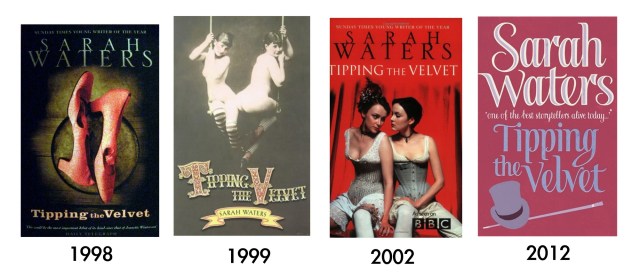
Please note: It’s possible that some of these dates are wrong! I found a lot of book covers that looked really contemporary but were cited everywhere as being from the ’70s or ’80s, and so I left those out, but I assume based on that experience that there are other inaccuracies as well, but I did my very best to verify the dates.
100 Best Lesbian Fiction & Memoir Books Of All Time
Last month, we invited you to pick the best queer-lady fiction and memoir books of all time via goodreads, and boy did you ever! So, without any further ado, we present the top 100, accompanied by our favorite goodreads endorsements.
100 Best Lesbian Fiction & Memoir Books Of All Time
[according to you]
100. Gut Symmetries, by Jeanette Winterson (1998)
“Gut Symmetries” is about love. And physics. And geometry. And the infinite and the finite, and matter and what matters, and particles and monstrosities and life and time and death and the grinning skull in the mirror.”
– Sam, Goodreads
99. All That Matters, by Susan X. Meagher (2007)
“I loved this book, from the beginning to the end! The discussions between Kylie and Blair cover everthing important in human life and relationships!”
-Ulla, Goodreads
98. Map of Ireland, by Stephanie Grant (2009)
“Painful, cleanly written story of a 16-year-old Irish-American kid from Southie…She smacks into the discomfort of deeply inculturated racism as it seeps into her home life and her attempts to understand and realize her own unspooling sexuality.”
-Mary, Goodreads
97. Say Please: Lesbian BDSM Erotica, by Sinclair Sexsmith (2012)
[read our post on say please here]
“This is a great collection of erotic, hands down one of the best collections I’ve read. Sinclar Sexsmith has curated a wonderful collection of stories that are sure to titillate and make a good girl blush.”
– Erin, Goodreads
96. Far from Xanadu, by Julie Anne Peters (2005)
“Peters deals with not just the issues of being a gay teenager in this book, but also the emotional turmoil of feeling abandoned.”
– Jill, Goodreads
95. Happy Accidents, by Jane Lynch (2011)
“This is a breezy read that won’t take up much of your time, but it will surprise you with its candour.”
– Sean Kennedy, Goodreads
94. Stay, by Nicola Griffith (2003)
“STAY is less of a mystery or a thriller than a grief-and-recovery story — but I don’t at all mean to warn you off; there’s a good amount of mystery and action. But what’s going on with Aud’s personal development is central and the action happens around the edges, as it were.”
– Rachel Neumeier, Goodreads
93. Drag King Dreams, by Leslie Feinberg (2006)
“This book was so inspiring and heartbreaking. The story lines are complex but easy to follow.”
– Kit, Goodreads
92. Art & Lies, by Jeanette Winterson (1996)
“In Art and Lies, Jeanette Winterson is crusading against a predictable and unimaginative reality that denies that there is more than meets the eye.”
-Twiggy, Goodreads
91. Babyji, by Abha Dawesar (2005)
“This is a very honest and true account of the 16-year-old mind, but it goes beyond that to the complexities of self discovery amidst the search for meaning in a world filed with inequalities.”
-Mandi, Goodreads
90. Seriously…I’m Kidding, by Ellen Degeneres (2012)
“Ellen’s book was the perfect balance of advice and jokes. It’s an extremely light and easy read.”
-Kristyn, Goodreads
89. Y: The Last Man, Vol. 1: Unmanned, by Brian K. Vaughan (2003)
” This book was interesting and intricate. The multi-character perspective never got confusing and worked very well to add suspense into the plot.”
– Stella FAYZ Chen, Goodreads
88. Southland Auto Acres, by Lisa Jones (2010)
“A fun, breezy read. A nice, tight story that moves. More than just a coming out book. The backdrop of the car lot was well drawn.”
– Brook St., Goodreads
87. The Pyramid Waltz, by Barbara Ann Wright (2012)
“I can only say that this book was incredible. The characters were complex and well-written. The dialogue was fantastic and often humorous. Each character brought something new to the book and was very distinct.”
– Jennifer Lavoie, Goodreads
86. The Slow Fix, by Ivan E. Coyote (2009)
“These autobiographical short stories are phenomenal. Most are fewer than 5 pages long, many are about perceptions of gender, but all are about finding one’s place in the world. In the end, they are about the folds of community, the weave of the fabric, and I was really impressed with the depth and feeling that Coyote conveys in such little space.”
– Emily, Goodreads
85. The Complete Strangers in Paradise, Volume 1, by Terry Moore (1998)
“Very well written, wonderfully illustrated and tons of heart.”
– Autumn Eden
84. Close to Spider Man, by Ivan E. Coyote (2000)
“A very heartfelt bunch of stories about growing up knowing that you just don’t fit in. An excellent read for oddballs everywhere.”
– Vanessa, Goodreads
83. Complete Hothead Paisan, by Diane DiMassa (1999)
“It’s wonderfully cathartic at times, deeply meaningful at others, and maintains a very dark gallows humor. Yes, Hothead does relentlessly hate on men and het women, but you’d be missing the point to dismiss it for that.”
– Ellie, Goodreads
82. Rage: A Love Story, by Julie Anne Peters (2009)
“I thought that the dychotomy between the protagonist’s fantasy life and reality was very well portrayed, and Ms. Peters did an excellent job portraying an abusive (high school, lesbian) relationship.”
– Liz, Goodreads
81. A Love Story Starring My Dead Best Friend, by Emily Horner (2010)
“Horner’s first novel is ably plotted and well-done. There were more than a few laugh-out-loud moments, and I liked the narrator very well. She was achingly believable and so adolescently stupid she could have stepped right off the page. ”
– Melody, Goodreads
My Top 8 Favorite Authors: Riese, Editor-in-Chief
In My Top 8, various members of Team Autostraddle tell you which writers made us who we are today and invite you to like all the same things we like. Today, Editor-in-Chief Riese shares feelings about Lorrie Moore and Mary Gaitskill and some other people.
What makes a “favorite author”? This was hard to narrow down, but eventually I decided on the following: my top eight authors would be authors who changed who I was as a writer. I also decided to focus exclusively on fiction & non-fiction writers rather than on those who are primarily poets — but if you want to read about my favorite poets, I’ve written extensively in the past about my love for Stephen Dunn, as well as my love for Rilke and Jack Spicer and Raymond Carver. Stephen Dunn is without a doubt one of my favorite writers of all time.
The other hard part was all the authors I love on account of two or three books I’ve read, which doesn’t seem like enough to qualify the author as my favorite — this includes authors who’ve only written one or two books (Miranda July, Colleen Curran, Curtis Sittenfeld) and authors who’ve written so many books that the fact that I’ve only read two or three of their books still leaves me unqualified to declare them a favorite (Amy Bloom, Michael Cunningham, Rick Moody). Eventually I settled on the following eight humans. This was very difficult. I may have incldued nine.
MY TOP 8
Lorrie Moore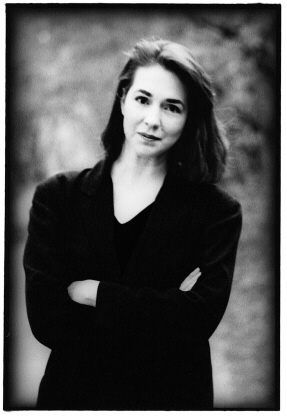
Books Read: Self -Help (1985), Like Life (1990), Birds of America (1998), Anagrams (1986), Who Will Run The Frog Hospital? (1994), about half of A Gate At The Stairs (2009)
Books Yet To Read: the rest of A Gate At the Stairs
Favorite: Birds of America (1994)
We read Lorrie Moore’s How To Be A Writer — first try to be something, anything else — on my first day of workshop in 1998. The writing teachers at Interlochen approached us from a strange in-between place representing two warring desires: they wanted to foster our talents but also to ensure our career expectations remained low.
First try to be something, anything else.
But in confidence a teacher told me I should definitely try to be a writer and also that I should read more Lorrie Moore. I didn’t do anything about either of those ideas for a while.
First, try to be something, anything, else. A movie star/astronaut. A movie star
missionary. A movie star/kindergarten teacher. President of the World. Fail miserably.
Three years later, the most talented and most insufferable member of my upper-level undergraduate fiction workshop asked if I’d read Lorrie Moore and said my writing reminded him of hers. “I get that a lot,” I told him, inaccurately. A few weeks later I left my stupid boyfriend and moved back to campus with friends and bought Lorrie Moore’s Self-Help. There was a story about me and my stupid boyfriend in it, called How, which seemed serendipitous.
Pace around in the kitchen and say that you are unhappy.
But I love you, he will say in his soft, bewildered way, stirring the spaghetti sauce but not you, staring into the pan as if waiting for something, a magic fish, to rise from it and say: That is always enough, why is that not always enough?
Then I was sleeping with a 19-year-old who worked at my gym and was dating a high school swimming star who went out of town a lot for meets. Lorrie Moore wrote a story for us, too, called How To Be An Other Woman.
It is like having a book out from the library.
It is like constantly having a book out from the library.
I finished Self-Help the night the 19-year-old promised he’d break up with the swimmer and I’d accidentally taken a Ritalin instead of an Elavil before bed. I wrote a story called How to Be Normal, about the relationship I’d recently left, because I couldn’t read Lorrie Moore without starting to think like a second-rate Lorrie Moore. My teacher said it reminded him of Lorrie Moore. This time I knew what he was talking about.
My Mom owned Moore’s first novel, Who Will Run The Frog Hospital?, so I snatched that when packing to leave Michigan for New York and read it in July 2004, mostly on the subway, probably. That’s a standalone book, I think, you can read it and like it but not really know Lorrie Moore like you would if you’d read her short stories.
Then I read Self Help again, that August, when I’d just started dating an about-to-get-divorced Republican and couldn’t get a job and when I did get a job, I’d quickly lose that job. My debt mounted. I was outside of things, but paying very close attention.
That had been in Agnes’s mishmash decade, after college. She had lived improvisationally then, getting this job or that, in restaurants or offices, taking a class or two, not thinking too far ahead, negotiating the precariousness and subway flus and scrimping for an occasional manicure or a play. Such a life required much exaggerated self-esteem. It engaged gross quantities of hope and despair and set them wildly side by side, like a Third World country of the heart.
Lorrie Moore’s protagonists are always a little bit outside, always watching, always finding themselves with partners or jobs or homes or lives that don’t fit, wondering why they’ve made such egregiously unwise choices. Their friends are smart and clever, good with puns and wordplay. Like my friends. Humor is relied upon when tragedy strikes, even when nobody else is laughing. Lorrie Moore’s protagonists tell jokes nobody else gets.
The Mother does not know how to be one of these other mothers, with their blond hair and sweatpants and sneakers and determined pleasantness. She does not think that she can be anything similar. She does not feel remotely like them. She knows, for instance, too many people in Greenwich Village. She mail-orders oysters and tiramisu from a shop in SoHo. She is close friends with four actual homosexuals. Where do these women get their sweatpants? She will find out.
In December I read Like Life and loved it so much. Lost without a constant drip of Lorrie Moore, I immediately picked up Birds of America and read it the month I dumped my last boyfriend ever, the Republican, in January of 2005. It was a transformational time. Like Life and Birds of America were fuller than Self-Help, with more characters, and I loved them both and passed them on to similarly impressed friends.
In March of 2005 I read her second novel, Anagrams. I liked all the sentences and words but not the plot/story. It read like a short story writer rebelling against her contractual obligation to write a novel. But it had some of her best lines ever in there. Like when she sleeps with her friend Gerard, which she defines as “spastic and looped, doomed for failure, like two senile inventors in an upstairs room, lonely as spoons,” she explains her desire to be with him (or their desire to be with each other, really):
Life is sad, I thought. Here is someone.
Isn’t that perfect?
In 2008 I read Anagrams again, because Lorrie Moore hadn’t written a new book yet, so what was I supposed to do? I loved it this time. Maybe I was smarter suddenly. When I picked up A Gate At The Stairs last year, it was like returning to an old friend, like returning to my most mish-mashed self. The mystery is all.
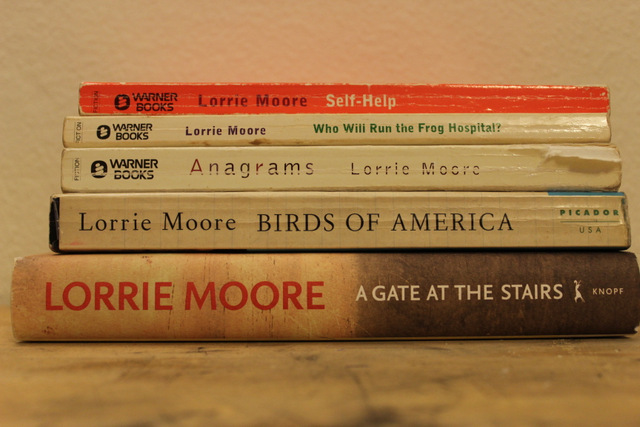
my lorrie moore books
Lorrie Moore taught me how to write my own brain.
Mary Gaitskill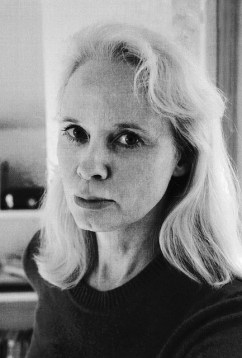
Books Read: Don’t Cry (2009), Veronica (2005), Because They Wanted To (1997), Two Girls Fat & Thin (1991), Bad Behavior (1988)
Books Yet To Read: n/a
Favorite: Bad Behavior (1988)
I was writing a story about sex work for nerve.com and my editor asked if I’d ever read Mary Gaitskill. I had not. He recommended Bad Behavior, her short story book best known for the story “Secretary,” which had recently been made into a movie starring Maggie Gyllenhall. He was just in time: I’d just ran out of Lorrie Moore books to read.
But Gaitskill was dark, like fuck-you-in-an-alley dark, like piss-and-shit dark, like hermetic-office-drones dark. People who’ve given up on happiness but haven’t stopped wanting everything else, especially love or music or desire or revenge.
This was the kind of writer I wanted to be. These were the people I wanted to write about, the feelings I wanted to excavate.
I ate Bad Behavior in a few days and wrote, wrote, wrote. Her novel Veronica, about a model named Allison and New York City and drugs and sex and Allison’s HIV-positive friend Veronica, came out a month or two later and would eventually win lots of awards. I bought it brand-new in hardcover, something I’d never done before. I’ve read it four times since.
I wanted something to happen, but I didn’t know what. I didn’t have the ambition to be an important person or a star. My ambition was to live like music. I didn’t think of it that way, but that’s what I wanted; it seemed like that’s what everybody wanted. I remember people walking around like they were wrapped in an invisible gauze of songs, one running into the next — songs about sex, pain, injustice, love, triumph, each bursting with ideal characters that popped out and fell back as the person walked down the street or rode the bus.
I read Because They Wanted To, another short story collection, next, and loved it, too. Two Girls Fat & Thin was harder to get through, but is by far her most ambitious production and contains, I think, some of her best physical descriptions, of which there are so many I had to just close my eyes and flip to a page to find one for you, because deciding was too hard:
The new school was filled with crowds of strangers with ratted nests of bleached hair, makeup, and breasts. The girls wore pointy boots and stood with their legs apart and their hips thrust out; the boys wore cleats and had faces like knives.
Her characters exist on the peripheries of various sexual subcultures, are plagued by self-destruction, are distracted by the seemingly banal intrusions of ordinary popular culture, are sometimes beautiful and often cruel or damaged. They have complicated and torrid relationships with the regular working world. She speaks explicitly no matter what the vocabulary, she is hard and gross and honest about the deepest most deviant but also earnest and beautiful pits of humanity.
Plus there’s all these other ways she speaks to me: her stories are often set in Ann Arbor, where I grew up, or New York, where I used to live, or San Francisco, where I live now. She’s bisexual and at least a third of her characters are, in some way, queer.
I’ve read everything she’s ever written. When Don’t Cry, another story collection, came out three years ago, I promptly cried — out of joy.
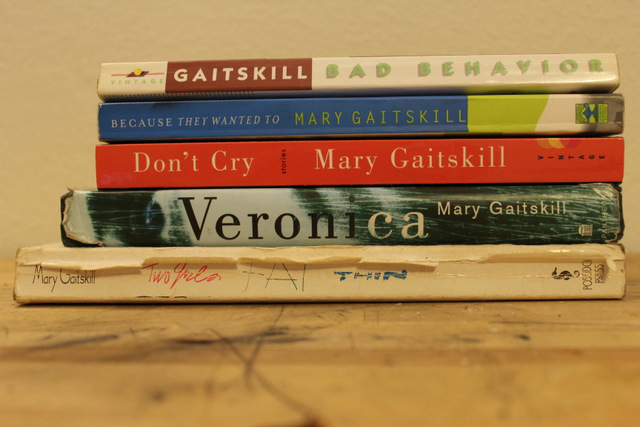
my mary gaitskill books
Mary Gaitskill taught me how to write about sex and beauty and ugliness and New York City.
Raymond Carver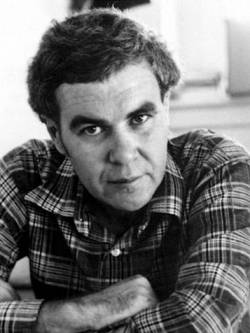
Books Read: Where I’m Calling From (1998) [contains stories from Will You Please Be Quiet Please? (1976), Furious Seasons (1977), What We Talk About When We Talk About Love (1981) and Cathedral (1983)] Where Water Comes Together With Other Water (1985), A New Path To The Waterfall (1989), All Of Us: The Collected Poems (1996)
Books Yet To Read: Elephant (1988)
Favorite: What We Talk About When We Talk About Love (1981)
Raymond Carver is a very famous short story writer, maybe even the best short story writer of the second half of the 20th century. One of them, at least. It’s like he invented this style. Minimalism. Some titles are What We Talk About When We Talk About Love and Will You Please Be Quiet Please? Maybe you read Cathedral in class –Norton loves Cathedral — the one about the blind guy, and tracing?
Raymond Carver was who and what I admired when I first got to Interlochen. I would read a Raymond Carver story and then write my own story. His protagonists were sad and their wives were disappointed. I write too many words all the time but Raymond Carver doesn’t need so many words. I read a biography about his life. He drank a lot and was in love with Tess Gallagher and taught at Iowa and married Maryann.
Raymond Carver was drunk for most of the time. Until the last five years. He had lung cancer. He gave up drinking. He had his “second life,” but he was still brilliant and doomed.
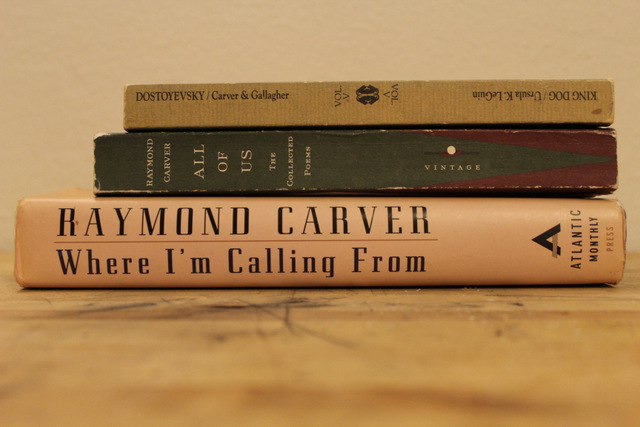
these are some of my raymond carver books
Raymond Carver taught me how to say more things with less words.
A.M. Homes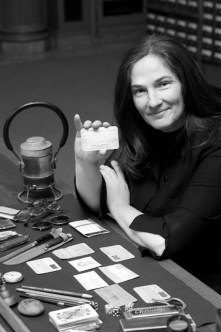
Books Read: Music For Torching (1999), This Book Will Save Your Life (2006), The Safety of Objects (1990), Things You Should Know (2002), The Mistress’s Daughter (2007)
Books I Haven’t Read: Jack (1989), In A Country of Mothers (1993), The End of Alice (1996), May We Be Forgiven (2012)
Favorite: The Safety of Objects (1990)
I came to A.M. Homes backwards: I saw the movie, The Safety Of Objects, and in the summer of 2004 I saw the book at The Strand and so I bought it and wow, it was so good.
Homes deals almost exclusively with the dark side of Suburbia — parents and siblings and lovers and classmates with secrets, thrashing around inside the plastic bag of their lives, yearning for something more but too civilized to get it with anything resembling finesse. I ate Things You Should Know in a day. I didn’t like This Book Will Save Your Life at first but then I loved it. I listened to The Mistress’s Daughter on audiobook, and it wasn’t everything I hoped it’d be but I liked knowing more about her.
A.M. Homes is bisexual, by the way, and wrote some L Word episodes back when the show was still good.
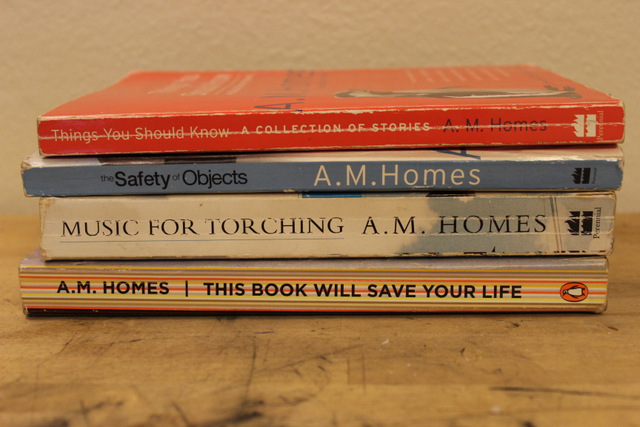
my a.m. homes books
A.M. Homes taught me how to write sympathetically about privileged people.
JONATHAN FRANZEN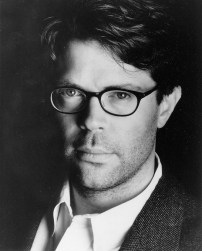
Books Read: The Corrections (2001), How To Be Alone (2002), The Discomfort Zone (2006), Freedom (2010)
Books Yet To Read: Strong Motion (1992), Farther Away (2012)
Favorite: Freedom (2010)
The Corrections came out in paperback in 2002, and it had been lauded as a groundbreaking return to the Modern Novel, a sprawling beast of a book grounded in the Midwest and starring a family with three adult children and also featuring everybody they’d ever known, ever. It was about everything, though.
My boyfriend was going home over winter break and I was staying behind to take care of the dog and figure out how to leave him. I hadn’t been very good at reading since we’d started dating — he didn’t read, not ever, except for school — and between semesters, with him back home and his physical presence and overall negative energy removed from our apartment, I sat down on the couch and opened a novel — The Corrections — and read it and kept on reading it. I just read it and read it and read it and it reminded me why I wanted to write and why I couldn’t be with anybody who wasn’t desperately curious, as I was, about why people do the things they do and why the world is the way it is.
How To Be Alone I read some years later, and loved it too. The Discomfort Zone I was fairly “meh” about, I’m not sure if I read the whole thing or just a little bit. I think I got it on audiobook, which was probably a mistake. Then Freedom came out and was even better than The Corrections. My girlfriend read it after I did and she loved it too. Jonathan Franzen can eliminate all useless words and still have a million words. He can weave a gigantic story. He’s one of those writers you want to read a lot of “How I Write” things about, and copy them.
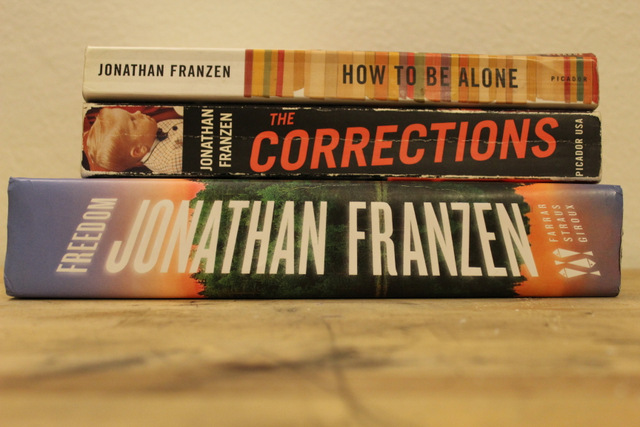
my jonathan franzen books
Jonathan Franzen taught me how to write an important novel. One day I’ll do something about that knowledge.
Pam Houston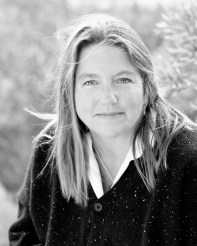
Books Read: Cowboys Are My Weakness (1993), Waltzing The Cat (1999), A Little More About Me (2000)
Books I Haven’t Read: Sight Hound (2006), Contents May Have Shifted (2012)
Favorite: Cowboys Are My Weakness (1993)
In the early ’90s, I think, Pam Houston came to Interlochen to do a reading, and while she was there she went fishing with three of my writing teachers, one of whom would become a kind of surrogate father for me while I was in school there. In “In The Company of Fisherman” she described driving with my teachers and their relationship to the Michigan landscape. She nailed it:
The whole conversation is less like speaking really and more like singing, a song they’ve spent years and years of these cold spring nights together learning, nights anybody anywhere else in the world would call winter, nights filled with an expectation that can only be called boyish and shadowed by too much of the grown-up knowledge that can ultimately defeat men.
Pam Houston is an outdoorswoman. I’m not, really, not at all, but Pam Houston makes me wish I was. The summer after graduating high school I drove up north to visit aforementioned writing teacher and his daughter, Jamie, and at some point I snagged Houston’s famous short story book, Cowboys Are My Weakness, from Jamie’s shelf. I was just gonna flip through it while Jamie was in the shower, but I got sucked in. For two years I’d been studying with those men she wrote about, learning about poetry in a distinctly Michigan way, reading men like Jim Harrison and Gary Snyder talk about the woods, and here was a woman writing about cold-weather camping, big dogs, Alaska, Montana, getting caught in the rapids and cowboys. I proceeded then to another short story book, Waltzing the Cat, and a book of personal essays called A Little More About Me.
I wrote a little essay called “I’d Like To Have a Lover Like Yours” and dedicated it to Pam Houston. It was the first personal essay I ever published.
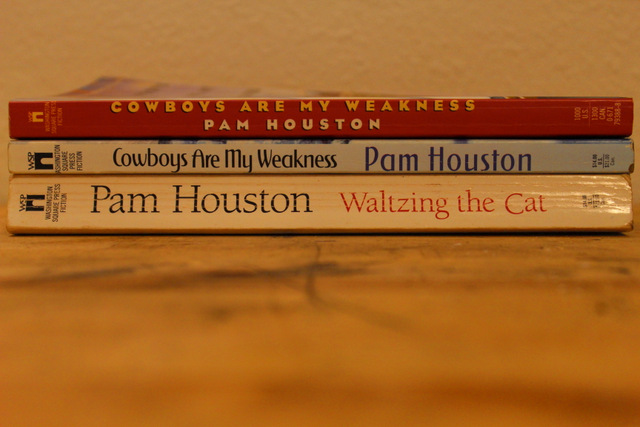
my pam houston books (yes i have two copies of cowboys are my weakness”)
Pam Houston taught me how to write about the woods.
Joan Didion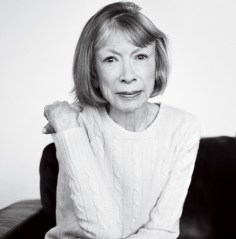
Books Read: The Year of Magical Thinking (2006), Play It As It Lays (2005), about half of We Tell Ourselves Stories In Order To Live (2006), which contains her collective work from seven books of non-fiction: The White Album (1979), Slouching Towards Bethlehem (1968), Miami (1987), After Henry (1992), Where I Was From (2003), Political Fictions (2001) and Salvador (1983).
Books I Haven’t Read Yet: Blue Nights (2012), A Book Of Common Prayer (1997), The Last Thing He Wanted (1996) and the rest of We Tell Ourselves Stories In Order To Live (2006).
Favorite: The Year of Magical Thinking (2006)
I don’t know how to talk about Joan Didion. She’s this tiny woman and this great big thing. I started with The Year of Magical Thinking in the beginning of 2006, because it won a lot of awards and I’d liked the article about it I read in New York Magazine. It said all the things about grief, and death when it comes suddenly. She said all the words I wish I knew how to say. I love the essay Goodbye To All That, of course, it’s possibly my favorite essay of all time. Since then I’ve just been reading all her essays.
I’m not sure how I felt about Play It As It Lays, the only novel of hers I’ve read, but I want to read all the true things she’ll ever read, and so luckily I have a big book enabling me to do that. There’s so much that I can do this for the rest of my life, I think. There will always be more Joan Didion to read.
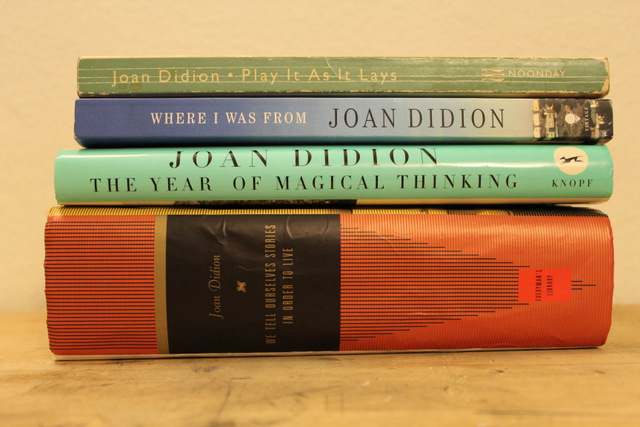
my joan didion books
Joan Didion taught me how to write about myself and the whole world at the same time, and also about place.
Dorothy Allison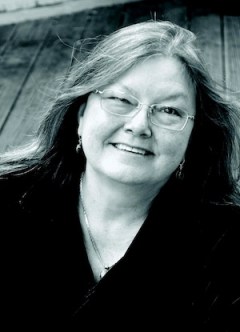
Books Read: Trash: Short Stories (1988), Bastard Out of Carolina (1992), Two Or Three Things I Know For Sure (1995)
Books I Haven’t Read: Skin: Talking About Sex, Class and Literature (1994), The Women Who Hate Me: Poems By Dorothy Allison (1983) and Cavedweller (1998)
Favorite: Two Or Three Things I Know For Sure (1995)
The first Dorothy Allison anything that I read was “River of Names” — we read it in class in high school — and it read like an actual river, like you’re just flowing from one idea to the next, past each quick tragic death of a cousin, in and out of the bed she shared with her new lover. The next time I found Dorothy Allison was eight years later when my then-roommate said Bastard Out of Carolina was her favorite book and I figured it was high time I check it out. Everybody should, it’s that good. Trash came next and was awesome. But I’ve never loved anything quite like I love Two Or Three Things I Know For Sure, one of the finest little books I’ve ever read ten times.
“I know the use of fiction in a world of hard truth, the way fiction can be a harder piece of truth. The story of what happened, or what did not happen but should have — that story can become a curtain drawn shut, a piece of insulation, a disguise, a razor, a tool that changes every time it us used and sometimes becomes something other than we intended. The story becomes the thing needed.”
If you get into lesbian feminist etc anthologies, you”ll come to appreciate Allison also for her generosity as an anthologist. I’ve read stories & essays like “Private Rituals” in Too Darn Hot: Writing About Sex Since Kinsey,””Conceptual Lesbianism” in Surface Tension: Love, Sex & Politics Between Lesbians & Straight Women (1996), an interview in Happy Endings: Lesbian Writers Talk About Their Lives And Work (1993), “Her Body, Mine and His” in Pomosexuals: Challenging Assumptions About Gender & Sexuality (1997), “A Question of Class” in Sisters, Sexperts & Queers (1993) and “Her Thighs” in The Persistent Desire: A Femme-Butch Reader (1991). That’s a lot!
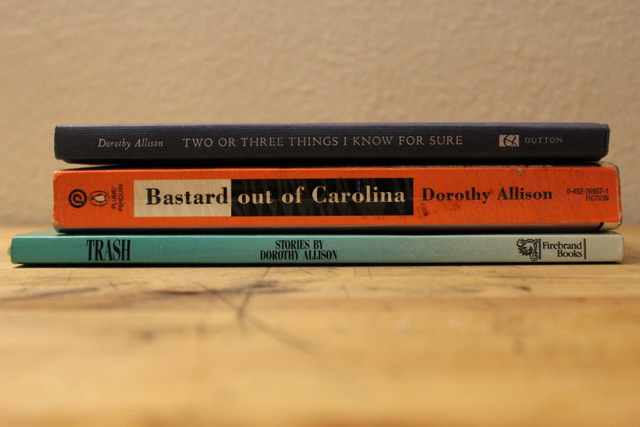
my dorothy allison books
Dorothy Allison taught me how to write about the truth.
Eileen Myles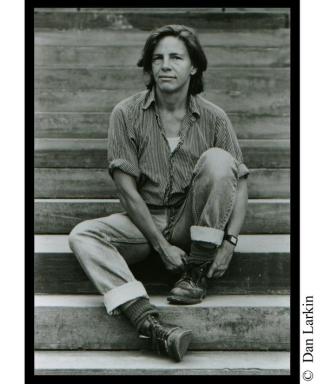
Books Read: Cool For You (2000), Sorry, Tree (2007), Not Me (1991), The New Fuck You (1995), Inferno (2010)
Books I Haven’t Read: Chelsea Girls (1994), Maxfield Parish: Early and New Poems (1995), School of Fish (1996), The Importance Of Being Iceland (2009), Snowflake/different streets (2012)
My then-girlfriend was pretty surprised when, halfway through “Lost In Canada: A 3,600 Word Advertisement For My Missing Notebook” in The Believer, I texted to ask if she’d ever heard of Eileen Myles. Why hadn’t I heard of Eileen Myles? She wanted to know. Sometimes the most important people fall through the cracks, I guess.
Along with other Myles fanatics, I’ve said so much about her on this website (and elsewhere) that I’ll just have to keep this one brief but you know, wow. Eileen Myles. I finally saw her in person a month or six ago at the library in San Francisco. She was reading in a room in the basement that had really terrible fluorescent lighting. Michelle Tea hosted. There she was, Eileen Myles! My girlfriend asked if I wanted to go get a book signed, or whatever, but of course not. I’d be too nervous.
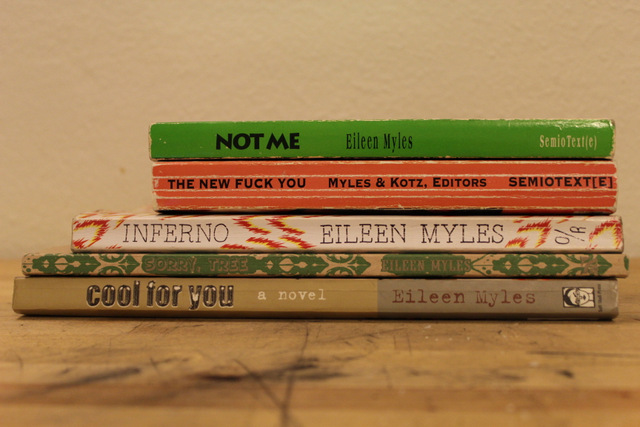
my eileen myles books
Eileen Myles taught me how to write like I think, and to own it.
…it seems to me that life is just a series of long, jagged peaks of joy — accompanied by a brooding and enduring sense of a loss — of powers, of love, of favorite shirts, of moments and opportunities and notebooks that together constitute the passage of one human, me, bobbing floating skipping like a flat stone down the river of life. It’s massive, this sense of things; it’s anonymous yet it feels personal from “here.”
– Eileen Myles, “Lost in Canada: a 3,600 Word Advertisement For My Missing Notebook.”
How The South Made Me A Queer Feminist
Going Down (South) is a regular column about y’all being a gender neutral pronoun, how red states are actually more of a purplish color, boiled peanuts, and the trials and tribulations of being a rural homo — with an emphasis on the tribbing.
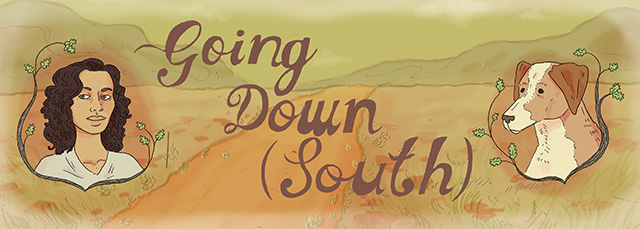
Header by Rosa Middleton
With North Carolina’s constitutional ban on gay marriage and the KKK fighting to adopt a Georgia highway, it seems like the South hasn’t made much progress in the history of ever.
But the Confederacy doth protest too much. Underneath the traditional values and worn-out denim is a pair of hot pink Long Johns. When a region is so distant from progressiveness, it’s bound to be a little eccentric, a little otherly, and have more indignant queer subtext than an episode of Rizzoli and Isles.
+
The Food
+
“I remember women by what we ate together, what they dug out of the freezer after we’d made love for hours. I’ve only had one lover who didn’t want to eat at all. We didn’t last long. The sex was good but I couldn’t think what to do with her when the sex was finished. We drink spring water, and fight a lot.”
– Dorothy Allison, “A Lesbian Appetite”

via Brian
Like many things, rural Southern cuisine hasn’t changed much since Sherman’s March to the Sea. Yet unlike outdated gender roles, this actually works in the South’s favor.* Soul food’s “one part Crisco, two parts social” ethos is so far removed from the mainstream beauty ideal; nutrition and community are valued much more than slim waistlines. You’re more likely to be hollered at for skipping a meal than reaching for a fifth helping of peach cobbler. Unknowingly, I grew up in a fat-positive environment where the bias was often against the slender image that — I later learned — seemed to be glorified elsewhere.
*Yes, I know that the American South is obese. Yes, I know that there is a correlation between obesity and poverty. No, I’m not glorifying an unhealthy way of living. I’m only pointing out a positive side effect. Laughter through tears is my favorite emotion, etc.
+
The Books
+
“Oh, she say. God loves all them feelings. That’s some of the best stuff God did. And when you know God loves ’em you enjoys ’em a lot more. You can just relax, go with everything that’s going, and praise God by liking what you like.
God don’t think it dirty? I ast. Naw, she say. God made it. Listen, God love everything you love.”
– Alice Walker, The Color Purple
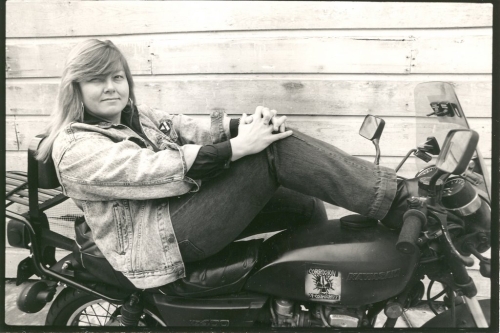
Dorothy Allison via Writers Being Real
Alice Walker was writing about lesbian sex before Ellen was having it. In fact, homoeroticism is a big thing in many celebrated works of Southern literature. Queer men abound in Tennessee Williams’ A Streetcar Named Desire and Cat on a Hot Tin Roof, and the same goes for William Faulkner’s protagonist in Light in August, Flannery O’Connor’s The Violent Bear It Away and Truman Capote’s Other Voices, Other Rooms.
While Rita Mae Brown’s more recent work revolves around cat detectives (um…), Molly Bolt loves up every pretty lady she encounters in Rubyfruit Jungle. Many of Dorothy Allison’s short stories follow that same pattern.
And it’s not just the gays, many authors that weren’t queer were masters at writing resilient Southern women. Jay Gatsby couldn’t hold a candle to Harper Lee’s Scout Finch (To Kill a Mockingbird) or Zora Neale Hurston’s Janie Crawford (Their Eyes Were Watching God).
+
The Outdoors
+
I felt the starched walls of a pink cotton penitentiary closing in on me, and for the second time in my life I thought of running away.” – Scout Finch,To Kill a Mockingbird

via Grey Hand Gang
In the rural South, the word “tomboy” is basically a euphemism for “she’s genderqueer, and she may or may not grow out of it. Hell if we know.” No one really raises a brow or bats an eyelash if a woman wants go hunting, fishing, mudding, noodling, camping, cowtipping, corn shucking, or any other outdoor activity — except skydiving and bungee jumpin’ because that sh*t just ain’t conservative. Getting one’s hands dirty and wearing pants are not things that challenge femininity or a Southern identity. On the contrary: It’s seen as being in touch with the land and the assumed heritage that comes with it.
I maintain that this is the reason why the ratio of pumps to deck shoes I own is 1:10.
+
The Music
+
“There is a connection to the land that just transcends your sexuality, your gender, and your race, and everything. And there’s a connection to the music that came from out of Appalachia and it infiltrates and affects everything that you’re doing. – Amy Ray, The Indigo Girls
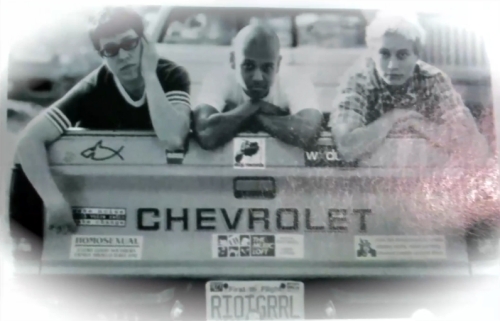
via Whistlin’ Dixie
The Indigo Girls — that folk duo that The L Word versed us in not once but twice — actually got its start opening for punk bands in Athens, Georgia in the 80s. It’s an odd match and while I can’t exactly envision mohawked people throwing up rock hands and moshing to “Closer to Fine,” the Indigo Girls’ message is often a very political, very punk one. The duo’s songs rely on rural imagery in the style of country music, yet fearlessly call out social injustice. The song “Shame on You” slaps racist wrists:
They say, ‘We be lookin’ for illegal immigrants
Can we check your car?’
I say, ‘You know it’s funny
I think we were on the same boat
Back in 1694’
The Indigo Girls’ relationship with punk rock came full-circle when the queercore band The Butchies began opening for them. Founded by two former members of Team Dresch at the tail end of the riot grrrl movement, The Butchies weren’t based in Olympia or even Portland, but Durham, North Carolina. In 2000, The Butchies performed a cover of Creedance Clearwater Revival’s “Unfortunate Son” with West-Coast-based Gossip and Sleater Kinney.
[youtube https://www.youtube.com/watch?v=3AlPVC4lggM&version=3&hl=en_US&rel=0]
While Gossip frontwoman Beth Ditto made her big queer pilgrimage to the Pacific Northwest a decade prior, her Arkansas drawl tints both this song and every interview she gives. Before she was an electropop diva, Ditto was a punk blues maven. Gossip’s debut album, That’s Not What I Heard showcases her without the aid of a synthesizer and, wouldn’t you know, Ditto’s capable of Aretha Franklin levels of soul power.
+
The Women
+
I’ve often heard tales of strong Southern women. My own past is full of single women who, abandoned by the men in their lives, took extreme measures to care for their children…It seemed the South was full of brave and determined women who had never met one another—distracted by poverty, religion and loyalty to a land that hadn’t done them any favors.” – Ashley Sayeau, “Southern Ms.”
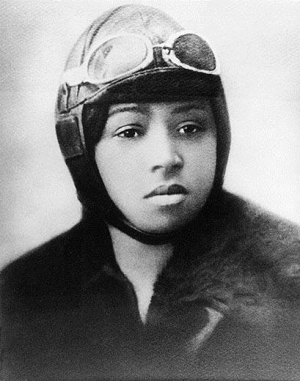
Bessie Coleman, First African American Female Aviator via Grey Hand Gang
Like many Southern women I know, I didn’t have just one mother — I had a team of them, composed of family friends and non-biological aunts and godmothers. The women who raised me were larger than life, commanding space and demanding acknowledgement. Even something a mundane as creating a meal for 12 turned into an Olympian effort. While the diet magazines in the supermarket checkout line collected dust, they wielded their power with the precision of a KitchenAid Mixer and everyone knew that they held Sunday afternoon luncheon in their collective balance.
The first person who introduced me to Fried Green Tomatoes wasn’t another lesbian, but my own mother. I was five and Idgie Threadegoode’s younger incarnation was the only thing capable of holding my attention through the movie. I harmlessly wanted her to be my best friend. In retrospect, I understand that my mom desired that same aspect of Idgie and Ruth’s relationship.
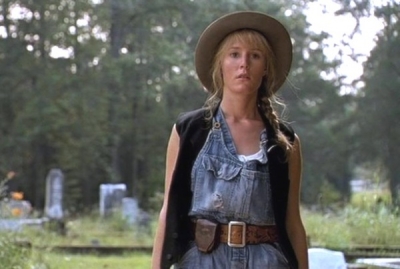
via Universal Pictures
Maybe, while they’ll likely take it to their graves, the women who raised me were just a little bit feminist. And maybe even a little bit queer.
Bless their hearts (and not in the bad way.)
Special Note: Autostraddle’s “First Person” personal essays do not necessarily reflect the ideals of Autostraddle or its editors, nor do any First Person writers intend to speak on behalf of anyone other than themselves. First Person writers are simply speaking honestly from their own hearts.
8 Queerish Short Story Books
I grew up writing novels, because that’s what I read — novels. It’s not like Beverly Cleary or Judy Blume published short story collections. But then when you get older and are writing things for teachers or judges or whomever to read, everyone wants you to write short stories. I thought for a long time this shift was a logistical thing; workshopping a novel or evaluating submitted novels to writing contests is unwieldy.
There’s probably some truth to that, but short stories are also their own thing. And they’re rarely popular like novels are, which is funny, like how poetry isn’t popular, considering everyone’s got these allegedly short attention spans. Short stories are also always uniquely literary. Unlike popular novels like The DaVinci Code or Gossip Girl, keen storytelling is never the hook — good writing is. It’s not like I’m glued to a A.M Homes anthology because I can’t wait to see what happens next, I just want her to dazzle me with her perfect sentences.
So short story books are a bit more niche, and by definition cover more ground — more stories — than novels. And maybe that’s why it seems it’s way more likely to stumble across a lesbian here or there in a short story anthology than in a novel. In general things are a bit more queer.
Some Queer/ish Short Story Books
Trash, Dorothy Allison
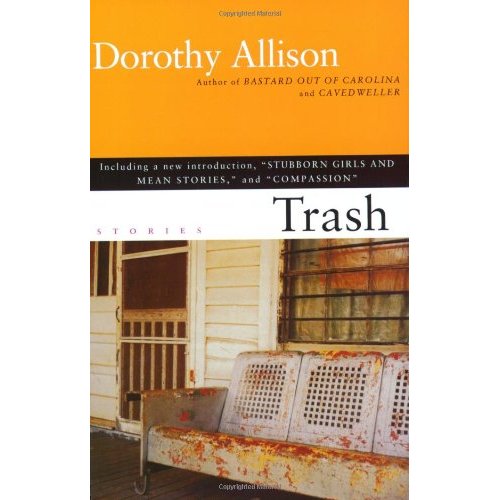
“I write stories. I write fiction. I put on the page a third look at what I’ve seen in life — the condensed and reinvented experience of a cross-eyed working-class lesbian, addicted to violence, language, and hope, who has made the decision to live, is determined to live, on the page and on the street, for me and mine.”
– Prologue to Trash
If you’ve yet to read any Dorothy Allison then you need to really just stop whatever it is that you’re doing with your life, sit down and approach this motherfucker. Trash, a National Book Award nominee, was published in 1988 (before Bastard Out of Carolina) and features 14 “gritty, intimate stories” and opens with ‘River of Names,” one of my favorite stories of all time.
+
A Blind Man Can See How Much I Love You, Amy Bloom
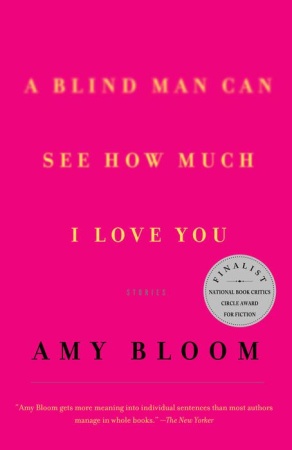
“It is all small things, Jane knows. She is now practically a professional observer of gender, and she sees that although homeliness and ungainliness won’t win you any kindness from the world, they are not, in and of themselves, the markers that will get you tossed out of the restaurant, the men’s room, the Michigan Womyn’s Music Festival.”
– “A Blind Man Can See How Much I Love You”
Amy Bloom herself is a psychologist, a bisexual, and a feminist. So you and her already have three entire passions in common, which is not for nothing. The title story in this collection stars the single mother of a transgender son with a narrative that begins in the sandbox and ends with bottom surgery. In another story there is a moment when the lesbian’s best friend’s husband tells her he knows she’s been in love with his wife for twenty years, and she responds that she hasn’t been, because it’s true, and god, isn’t it lame how they just assume that. The lesbian says there was just no chemistry. I read the whole thing in one afternoon.
+
Because They Wanted To, Mary Gaitskill
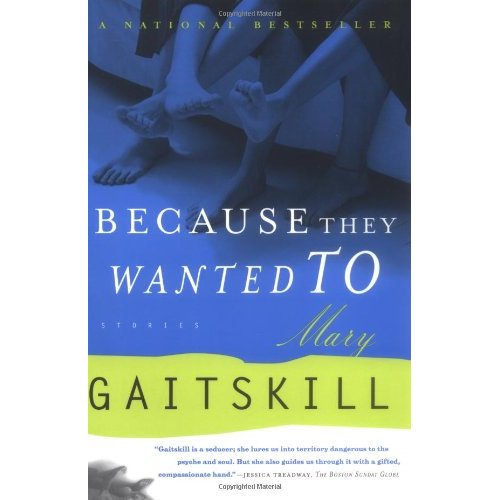
“Although she could be attracted to males or females, she had little luck with either; her shy flirtations tended to be muffled failures, which started, then ended, with puzzled indifference, embarrassment, and trailing irresolution.”
– “Orchid”
Gaitskill is one of my top five favorite writers of all time. She gets so unpretty, yet restlessly sexy and fierce, with characters who often exist on the peripheries of various sexual subcultures and are rife with self-destruction, emotional wastelands and complicated, torrid relationships with the regular working world. Seems like nearly half the stories in this anthology have some queer element. One story is narrated by a father whose lesbian daughter has just published a story about him in a magazine, the other tells of a bisexual woman who runs into an ex and is forced to confront long-buried memories of who she was and who she wants to be.+
+
No One Belongs Here More Than You, Miranda July

“When we were fourteen we got drunk for the first time, and for about nine minutes, everything seemed possible and we kissed. This encounter seemed promisingly normal, and in the following days I waited for more kissing, perhaps even some kind of exchange of rings or lockets. But nothing was exchanged. We each kept our own things.”
– “Something That Needs Nothing”
Miranda July is bisexual, and you probably saw her movie, Me And You And Everyone We Know. Before this book came out, a friend I worked with and eventually slept with gave me “Something That Needs Nothing,” she’d read it in The New Yorker and thought I’d like it. I did. And then beyond that, there was this whole entire book. Not that they’re all about queer people — they aren’t. But they’re about weird people, and I think you, my loves, of all people, could appreciate that.
+
The Ring of Brightest Angels Around Heaven, Rick Moody
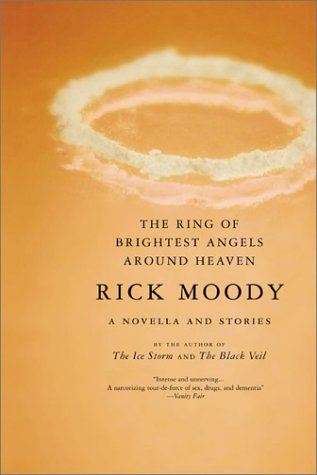
“Marlene’s cheekbones were like the sharp side of an all-purpose stainless steel survival jackknife, and her eyes narrowed to reflect disappointment and loss, which, when combined with her biceps, her violent and toned physique, made for a compelling female beauty. Doris, meanwhile, looked like an Ivy League intellectual.”
– “The Ring of Brightest Angels Around Heaven”
The title story is brutal and violent and it’s about all of these junkies, burnouts, suicidal queers and otherwise deviant kid-like-near-grownups all connected to each other through lovers and heroin and kink. The lesbian part opens in a Meatpacking District sex club where Doris and Marlene, a lesbian couples, buy this dominatrix Toni for the night at an auction. An abusive love triangle evolves. It’s not for the faint of heart. I think this story was the first place I’d ever heard about nipple clamps.
The other stories in the book I could take or leave and have since forgotten. This is one to get at the library, then.
+
The Whole Story and Other Stories, Ali Smith
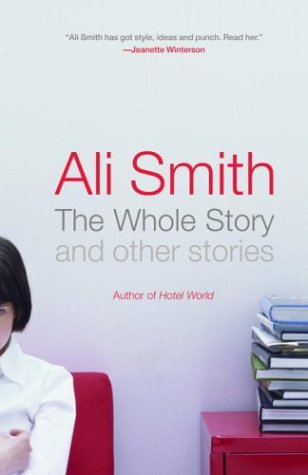
I borrowed this from a friend who said she thought I’d like it and she was right because I did like it, and then I kept it, even though she wants it back; but mostly because I kept forgetting to give it back. It’s experimental fiction and Ali Smith is a lesbian. In one of the stories, a woman falls in love with a tree. It happens. I think Free Love And Other Stories has actual queer characters (this one may not, but generally gender is an afterthought), but I’d be lying if I told you that I’d read it.
+
Out of the Girls’ Room and Into the Night, Thisbe Nissen
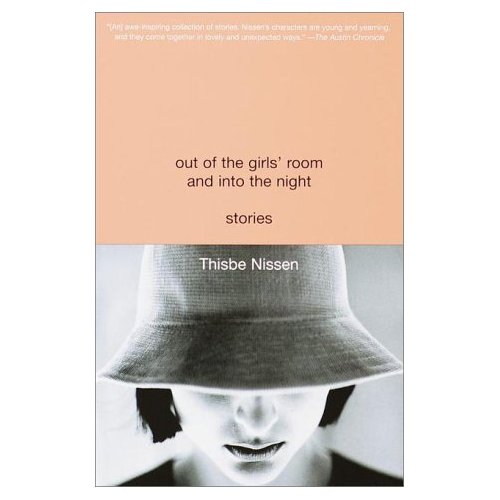
“Darcy presses her dry lips into the pad of Gwynn’s palm and lifts them again, like a swimmer coming up for air, and they sleep like that, tucked together, the soft pressure of assurance holding them to one another, as if that’s what safety is: a point of contact.”
– “What Safety Is”
Out of the Girls Room and Into the Night is one of my favorite short story books of all time. Nissen, a graduate of the prestigious Iowa Writers Workshop, explores youth with maturity and writes complicated, interesting stories about people who are sometimes college students; a feat which many consider impossible. The book is entertaining, expressive, brilliant and witty from beginning to end.
+
The Safety of Objects, A.M. Homes
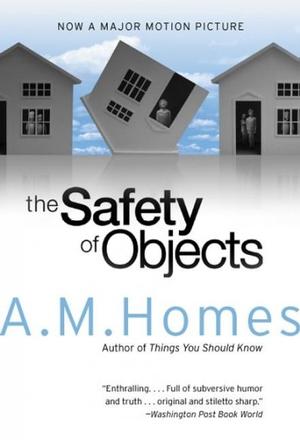 It’s actually bisexual author A.M. Homes brilliant novel, Music For Torching, that digs into lady-on-lady love; but her short story collections, even when lacking lady-on-lady love or overt gayness, have a queer sensibility vivid enough to snarl lesbian wonderwoman Rose Troche into adapting The Safety of Objects into a film (one of my favorite movies ever, also features a young K-Stew). Homes actually wrote a few episodes of The L Word back when it was still good. In The Safety of Objects‘ “Yours Truly,” the narrator literally locks herself in the closet to write love letters to herself and in “The I Of It” an old gay man ponders his life as he feels it slip away.
It’s actually bisexual author A.M. Homes brilliant novel, Music For Torching, that digs into lady-on-lady love; but her short story collections, even when lacking lady-on-lady love or overt gayness, have a queer sensibility vivid enough to snarl lesbian wonderwoman Rose Troche into adapting The Safety of Objects into a film (one of my favorite movies ever, also features a young K-Stew). Homes actually wrote a few episodes of The L Word back when it was still good. In The Safety of Objects‘ “Yours Truly,” the narrator literally locks herself in the closet to write love letters to herself and in “The I Of It” an old gay man ponders his life as he feels it slip away.
Autostraddle Read a F*cking Book Club #3 – Bastard Out Of Carolina
It’s Book Club #3 — Dorothy Allison’s Bastard Out of Carolina. I hope you read it. That will help you to participate.
It’s so funny, because you guys all have told me you have so much to talk about with this book, and I’m having a hard time finding anything to say at all. To me it feels like showing up to a wake, except without the sadness, grief and irreparable sense of loss; there’s this thing that everyone can see has happened, and you’re all in it together, but there’s nothing to say that will make it make sense, or sum it up, or wrap it up neatly so that everyone can put it in the past and move on.
Anyways! I thought this book was really good, how about you?
I guess the truth is that it’s hard to talk about this book without talking about myself, and I don’t want to do that here? Somehow this book is so personal – I don’t know if that’s just me, but honestly I suspect it’s not. Her experience is very specific (and I think before we go any farther we do have to acknowledge that this is more or less her experience, and fictionalized lightly I think if at all) in the details, but kind of universal in that it’s about the point at which you realize people who are supposed to love you can hurt you, that people who DO love you can hurt you, and that the people you trust most sometimes let you down in the most absolute and devastating way possible.
That is what saves this from being a YA novel, I think. I used to intern at a literary agency, and we got literally a few manuscripts a WEEK that were thinly veiled accounts of horrific childhood abuse. This is not that. There is a kind of pitiless distance there; Allison acknowledges all the feelings and pain that Bone has, and they’re real and not downplayed or blunted, but there’s no kind of cushion given to her in the narrative to ease them, either. In your standard paperback about Troubled Young People, there would be a kind guidance counselor or charitable neighbor or tough-love aunt that saves her. We sort of get close there for a while with Raylene, but Bone goes to Raylene’s house herself, and ultimately, nothing that her aunt does is enough to rescue her.
It doesn’t seem like a stretch to see Raylene as the author, as Dorothy Allison allowing her literary alter ego to comfort a younger version of herself, and to be the supportive shoulder that she may not have had in real life. But that’s what makes this book the thing it is: Allison doesn’t let herself change the story. No one saves Bone; no one rescues her. She has to learn the hard lesson that love isn’t enough, and that the people who love you will hurt you worst of all. This will maybe be a controversial statement, but I’m going to argue that this book isn’t ‘about’ abuse or its aftermath; it’s about this moment:
“You’re still mad at me, aren’t you?” Mama sounded like she wanted to cry. I bent forward and pressed my mouth to the blanket edge. “Not gonna tell me anything?”
One of the cows moaned out in the dark pasture. I swallowed again. “I’m waiting for you to go home,” I said. “I’m waiting for you to go back to Daddy Glen.”
There was a long silence. “You think I’m going to?” Mama whispered finally.
“Uh-huh,” I said.
There are a lot of scenes one could spend a lot of time discussing; for instance, the brutal rape, or the birth certificate. For some reason I was really fixated on Alma’s breakdown; she’s not the protagonist, but the image of her kneeling in a field of broken glass is a haunting one, and I come back to it again and again. I feel like if there’s something this book is trying to say about love and heartbreak and the burdens that both of them make us bear, it’s in that scene.
“Oh, but that’s why I got to cut his throat,” she said plainly. “If I didn’t love the son of a bitch, I’d let him live forever.”
And in the end, of course, what stays with you (or at least me) is just Bone, in a rocking chair by herself. Someone with her, but ultimately on her own.
I don’t know. That’s all I’ve got. What do you think?
NSFW Sunday Has 12 Ways to Read About Lesbian Sex, and Photos
Wow, is it Sunday already? Well, I hope you went to church, you little heathens. Why don’t you follow up on your holy morning by having a holy afternoon in bed with a lady/vibrator and a book. Yes, a book!

1. The Whole Lesbian Sex Book: A Passionate Guide for All of Us – The lesbian sex bible. You can read it on your kindle so nobody has to know. Or you can buy it for someone and then everyone will know, because you’ll be so good in bed or something.
2. Real Live Nude Girl: Chronicles of Sex-Positive Culture: This is a really fun collection of essays by Queer Carol Queen, on topics “ranging from pelvic exams, pornography law, the men’s movement, sex as art, Madonna, and sacred whoredom.”
3. The New Lesbian Sex Book, 3rd Edition – Interviews with REAL LIVE LESBIANS about their sex lives, has the impact of reminding you that there’s a lot of lesbians out there having sex and it’s not just you and your partner(s) in your teeny tiny village by the sea.
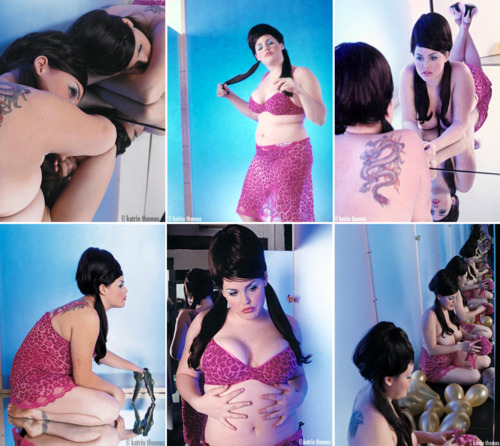
4. Big Sex Little Death: A Memoir by Susie Bright – Mega-famous pro-sex feminist author’s memoir tells the story of a “fearful Irish Catholic Girl Scout to gun-toting teenage revolutionary—and finally the “The Avatar of American Erotica”(NYTimes)… her early involvement with notorious high school radicalsThe Red Tideas well as the magazine she co-founded in the 1980s, On Our Backs—the first-ever erotic magazine created by women, which turned the lesbian and bisexual community upside down before it took the “straight” world by storm.”
5. Lesbian Sex: 101 Lovemaking Positions: I bet you don’t know anything about the Joyride, Tongue and Groove, Toast Her, Gilding the Lily, Peach Gobbler, Hanky Spanky, Girl Wrap or Velvet Rope, do ya? Well you could change that.
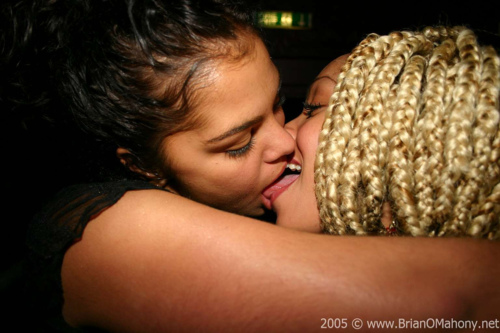
6. Sexual Intimacy for Women: A Guide for Same-Sex Couples: This is a serious book by Glenda Corwin, PhD, for ladies who want to “examine the emotional, physical and psychological aspects of their relationships, with the goal of creating more intimacy.”
7. The Ethical Slut: A Practical Guide to Polyamory, Open Relationships & Other Adventures – This is what Margaret Cho has to say about The Ethical Slut: “This book is the definitive guide to having your marriage and eating other people too. The Ethical Slut made me the ethical slut I am today, and I am so proud!”
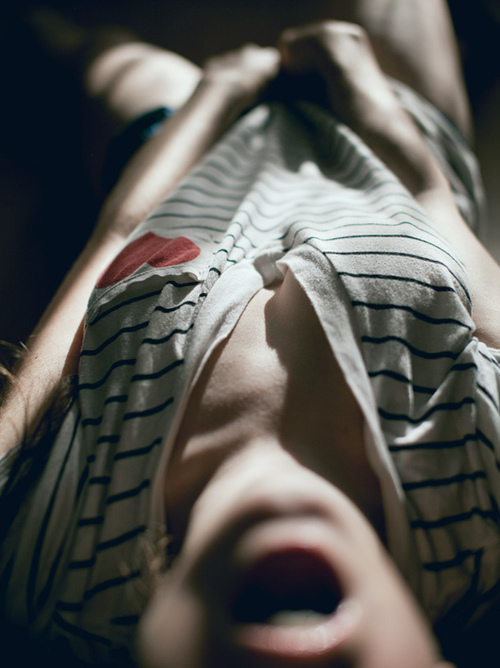
8 The Big Book of Sex Toys: From Vibrators and Dildos to Swings and Slings–Playful and Kinky Bedside Accessories That Make Your Sex Life Amazing: Tristan Taormino is a v.important “author, sex expert and adult film director” and also a queer — “Whether you’re a curious novice or an advanced aficionado The Big Book of Sex Toys offers recommendations and advice for the top toys in every category from vibrators to butt plugs to bondage and tells you everything you need to know but were too shy to ask.”
9. Jayme Waxman isn’t a lesbian but she is just the greatest, so this book is too: Getting Off: A Woman’s Guide to Masturbation.
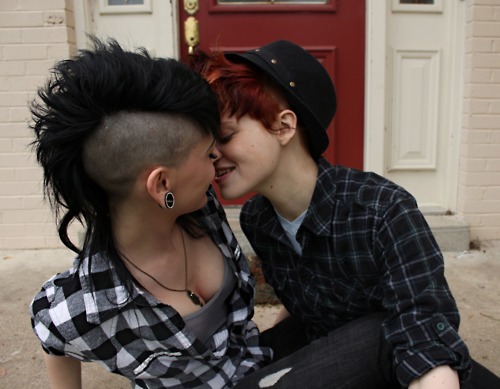
10. Susie Sexpert’s Lesbian Sex World – The cover of this book sort of makes me want to die but I’d just like to point out that this is where I first read about fisting.
11. Best of the Best Lesbian Erotica: Contributors include Dorothy Fucking Allison, Pat Califia, Cecilia Tan, Kate Bornstein and Joan Nestle.
12. Nothing but the Girl: The Blatant Lesbian Image A Portfolio and Exploration of Lesbian Erotic Photography– Artsy but sexay photos and artist biographies from photographers like Diana Blok, Tee A. Corrine, Jill Posener and Honey Lee Cottrell.
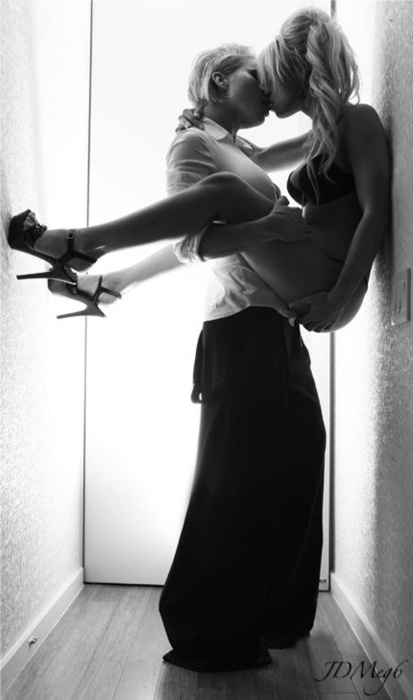
What are your favorite sex-related books?
Read A F*cking Book Club #3: We’re Reading Bastard Out Of Carolina!
Hello internet friends! Were you sad without a book to read for Autostraddle Book Club? Or did you instead experience an emotion approaching ‘happiness’ or ‘contentment’ because you weren’t reading a book where the protagonist was undergoing major life problems coupled with substance and/or other kinds of abuse? Well, either way, that time is over now. I know it’s been like forever or whatever, so here are the last two, in case you’ve forgotten what the deal is:
Eileen Myles’ Inferno
Ali Liebegott’s The IHOP Papers
We’re going to read Dorothy Allison’s Bastard Out of Carolina, which is kind of lesbian (and, like, actual contemporary literary) canon but which is also the first book in this series that I haven’t already read. So I’m right there with you guys! Laughing, crying, forgetting which page I left off on and accidentally reading over the same heartbreaking scene that made me have to put the book down temporarily last time! Oh I’m excited already. Important fact to note: continuing with an unintentional theme, this book deals in part with child abuse/sexual assault/rape, and if reading about those things is hurtful to you, please do not read this book.
If you feel like you can read about those things and be ok, then please do read this book, because I have read Two or Three Things I Know For Sure and I can tell you that Dorothy Allison is not fucking around. She is incredibly talented and pitiless; she tells her truth with precision and brutal honesty and also a kindness for herself and you, the reader, that is hard to forget. Here is one of my favorite passages from Two or Three Things:
They would come at me, those girls who were not really girls anymore. Grown up, wounded, hurt and terrible. Pained and desperate. Mean and angry. Hungry and unable to say just what they needed. Scared, aching, they came into my bed like I could fix it. And every time I would try. I would do anything a woman wanted as long as she didn’t want too much of me. As long as I could hide behind her need, I could make her believe anything. I would tell her stories. I would bury her in them. I have buried more women than I am willing to admit. I have told more lies than I can stand.
I never thought about what I needed, how hurt and desperate I was, how mean and angry and dangerous. When I finally saw it, the grief I had been hiding even from myself, the world seemed to stop while I looked. For a year, then another, I kept myself safe, away from anyone, any feeling that might prompt that rage, that screaming need to hurt somebody back…
Women lose their lives not knowing they can do something different. Men eat themselves up believing they have to be the thing they have been made. Children go crazy. Really, even children go crazy, believing the shape of the life they must live is as small and mean and broken as they are told.
– Dorothy Allison, Two Or Three Things I Know For Sure
We are not reading that book though, we are reading a different book, we are reading Bastard Out Of Carolina because I really wanna read it finally. It’s a fairly well-known novel even for people who aren’t huge homos, and was even made into a movie which I feel personally has the most incongruous movie poster/VHS cover of all time. I can’t tell you that you absolutely HAVE HAVE HAVE to read it. But Laneia and Sarah can!
Laneia:
She moved her brood of kids into an apartment building downtown, a second-floor frame walk-up with a shaky wide porch hanging off one side. No matter where she lived, Alma always had a porch.
I read Bastard Out of Carolina the same summer that I consumed Rubyfruit Jungle, To Kill a Mockingbird and most of Tipping the Velvet, among others. I don’t know — I was going through some feelings. The main theme of that summer was ‘Who the Fuck am I / What is This World.’ Dorothy Allison had been hyped up to some degree, so I didn’t expect to care about this Ruth Anne Boatwright, because of course I was above all hype, etc.
I read the book in one weekend. I read it on my steps in the pouring rain, chain-smoking and dying for a pimiento cheese sandwich. My accent came back. I started to remember what it had felt like to have to be mean sometimes — not because you were mean, but because the world was. I remembered not trusting anyone but your family and that isolation and vulnerability, but also strength. I mean, it was perfect, this book.
I don’t know how the south looks to people who didn’t sit on porches there all summer. I guess it can look romantic? Or even stupid? Dorothy Allison takes all of that away — the romance and the ignorance. Ruth Anne Boatwright is the furthest thing from stupid. She’s not precious or overstated either. The perfect balance of Bastard Out of Carolina is ridiculous.
Sarah:
I firmly believe that every lesbian in the world should read Bastard Out of Carolina. I would love if every human person in the world read it, but let’s get real, I met a guy last week who had never read a female author, so. In any case, if you like Autostraddle, I promise that you will love this book.
I personally connect with this book on a bunch of levels, not just in relation to sexuality. That’s certainly part of it; sexuality and “otherness” are strong undercurrents in Bastard, especially if you’re already tuned into that sort of thing. Beyond that, this is a story about family, in all it’s fucked up iterations. It’s about place (specifically the American South, but the lessons translate anywhere) and how the places we inhabit shape not only our lives but ourselves. It’s about being a strong woman and all that comes with it, the tough shit and the sisterhood alike. It’s about being an outcast. And can’t we all relate to that?
I would venture to call this book To Kill A Mockingbird for queers. It has a lot of the same soul, with a few twists. It gripped me in the same way; I picked it up and couldn’t put it down for days. This is the kind of novel you want to re-read every year, the kind you can’t get off your mind months after you’ve finished it. If you’re into gritty fiction with real substance that hits close to home, then “Bastard Out of Carolina” is required reading.
ARE YOU GOING TO BUY IT? DID YOU BUY IT YET. I JUST WANNA READ BOOKS WITH YOU GUYS.
Book club meeting will be on, oh, May 16th. Just so that no one, including and perhaps especially myself, has an excuse not to have it read. Ok? Ok good. SEE YOU THEN.
NSFW Sunday Knows All The Things She Said About Lesbian Sex
So there were four of us sitting here. Four women who primarily f*ck women, and one of them said, I’m so glad we’re all gay. And we all laughed. She said stuff about like; that we get to do all these fun things and women are just so much prettier and it’s so much more interesting having sex because there’s no like straight-up model like the hets have. Things like that. Then started thinking about other things other people have said and rounded a handful of them up for you. Pasted some of these things for you here. Share your favorite quotes that aren’t here in the commentttsss.
Oh for starters, Greta Christina said this, and we like it:
“An awful lot of people, of all genders and orientations, would benefit from the kind of sex that lesbians take as a given. The kind of sex where success isn’t overwhelmingly defined by one partner’s “performance.” The kind of sex that doesn’t make a sharp distinction between “foreplay” and “sex,” and that doesn’t have a strong opinion about which has to happen first. The kind of sex where the journey is the destination.”
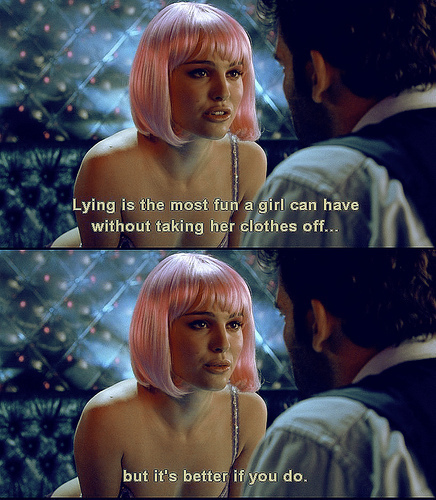
“There’s a moment in a woman’s life when she discovers she can have sex with as many people as she wants. Suddenly everyone is a potential partner. That’s when men get in the act which is why lesbianism isn’t really a thing it’s just this unbridled lust. It’s like god. If writers are the only people, I mean the last ones who have lives, lesbians are the only people who have sex. There’s a point at which you know this.”
-Eileen Myles, Inferno
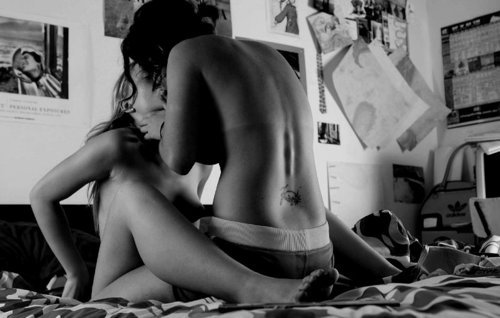
“When I make love I take my whole life in my hands, the damage and the pride, the bad memories and the good, all that I am or might be, and I do indeed love myself, can indeed do anything I please. I know the place where courage and desire come together, where pride and joy push lust through the bloodstream, right to the heart… I go to bed like I used to go to karate. Want and need come together in a body that is only partly my own… I took my sex back, my body. I claimed myself and remade my life. Only when I knew I belonged to myself completely did I become capable of giving myself to another, of finding joy in desire, pleasure in our love, power in this body no one else owns.”
– Dorothy Allison, Two or Three Things I Know For Sure
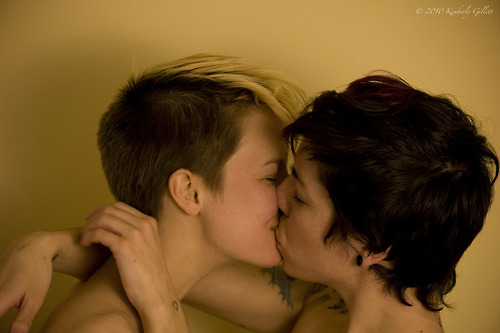
“I love butch women because no one else would ever have reached into that flannel-clad bundle of inarticulate erotic yearning with a mirror that reflected a sex goddess… I felt my sexual effect for the first time, and grew and grew like Alice in Wonderland drinking her magic potion. I love butch women because it was the synchronicity of butch sexual response that gave me my body… Women who decried being objectified had never had the opportunity to feel like this. They were an emblem of our sexual difference, those panties: We sinned, and shared our secret, together.”
– Carol Queen, Real Live Nude Girl
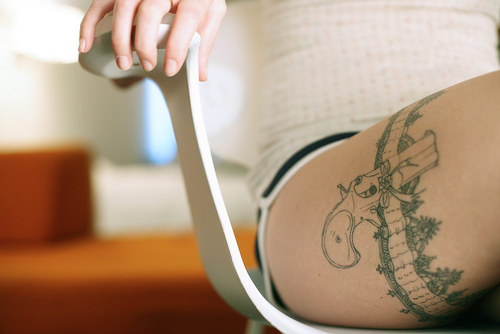
“Written on the body is a secret code only visible in certain lights: the accumulations of a lifetime gather there. In places the palimpsest is so heavily worked that the letters feel like Braille. I like to keep my body rolled up away from prying eyes, never unfold too much, or tell the whole story. I didn’t know that Louise would have reading hands. She has translated me into her own book.”
– Jeanette Winterson, Written on the Body
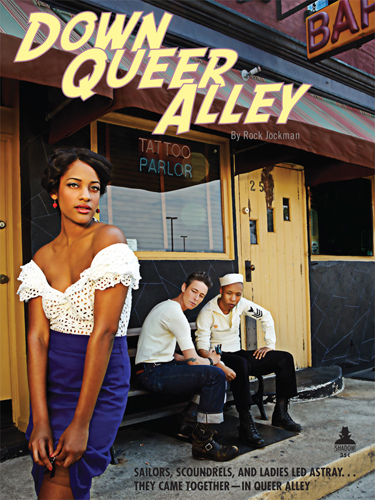
“Was it possible that someday — someday — I would hold naked in my arms, and continue to hold and continue to hold, pressed close to my body, a woman on whose femininity and masculine strength I could lean, trusting, whose mettle and daring would place her so high in my esteem that I would long to throw myself at her feet and do as she wished? I dared hardly believe what I was asking. I dared hardly believe myself.”
– Kathy Acker
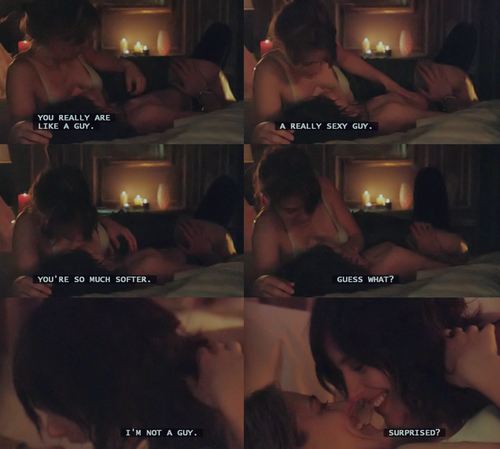
“I let my hand drop; she kept her fingers upon my lips, then moved them, very slowly, to my cheek, my ear, my throat, my neck. Then her features gave a shiver and she said in a whisper: ‘You won’t tell a soul, Nan—will you?’
I think I sighed then: sighed to know—to know for sure, at last!—that there was something to be told. And then I dipped my face to hers, and shut my eyes.”
– Sarah Waters, Tipping the Velvet
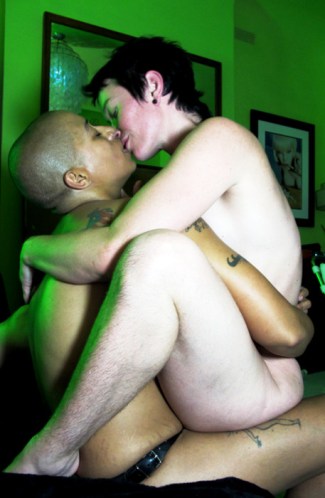
Tim: What is it you do, you girls? Should I even care? Does it even count?
Marina: Well, you were there — you saw how much it counts.
-The L Word
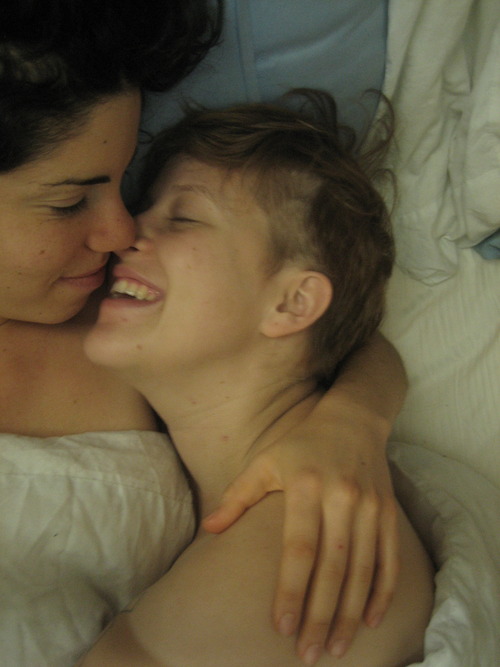
“The sexual encounter is queer because both partners are queer and the genders of the participants less relevant. Just because Batman is male and Catwoman is female does not make their interactions heterosexual — think about it, there is nothing straight about two people getting it on in rubber and latex costumes, wearing eyemasks and carrying whips and other accouterments.”
– J. Halberstam, “Queer Creatures,” On Our Backs Nov/Dec 1992
![]()
Sexy Tumblr Alert: If you wanna get SUPER NSFW then you should check out the Strap-On Log. Or, Tattoos For Girls combines heaps of fun tattoo ideas with partial nudity generally of the Suicide Girls variety.
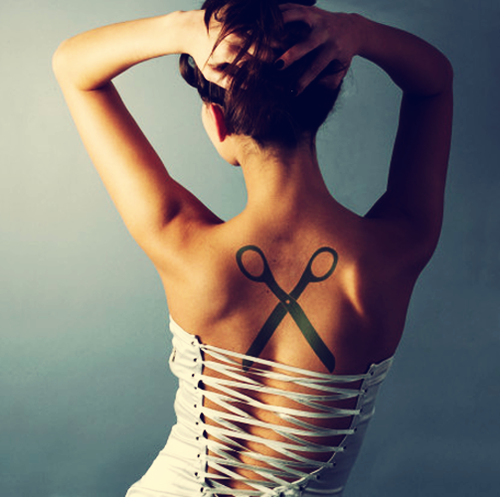
What Five Books Changed Your Life? Open Thread!
A bunch of celebrities picked books that most changed their lives, so we thought we would do the same. AND YOU SHOULD TOO! Just for funsies.
This isn’t the same as your favorite books or books you once enjoyed or recommended, this is about books that had you not read them, you would not be the person you are today. For example, although AM Homes, Raymond Carver, Lorrie Moore, Beverly Cleary and Joan Didion are some of my favorite writers, none of their books changed my life per se, I just thought they were all pretty fucking awesome. Get it, ok let’s go.
Famous people’s favorite books:
Claire Danes, aka Angela Chase
Deception by Philip Roth
Light Years by James Salter
Hills Like White Elephants (from The Complete Short Stories of Ernest Hemingway: The Finca Vigia Edition) by Ernest Hemingway
A Single Man by Christopher Isherwood
Anagrams by Lorrie Moore
The Wind-Up Bird Chronicle: A Novel by Haruki Murakami
Diane Keaton
Women Photographers edited by Constance Sullivan
Untitled by Diane Arbus
Keith Carter Photographs: Twenty-Five Years by Keith Carter
Photographs from Storyville, the Red-Light District of New Orleans by E.J. Bellocq
Dreamland: America at the Dawn of the Twentieth Century by Michael Lesy
Anderson Cooper:
A Death in the Family by James Agee
The Quiet American by Graham Greene
Dry: A Memoir by Augusten Burroughs
Families: A memoir and a Celebration by Wyatt Cooper
It Seemed Important at the Time: A Romance Memoir by Gloria Vanderbilt
The Journey is the Destination: The Journals of Dan Eldon edited by Kathy Eldon
Books that changed our lives:
Autostraddle CEO Riese:
New and Selected Poems 1974-1994, Stephen Dunn,
Bad Behavior: Stories by Mary Gaitskill
Savage Inequalities: Children in America’s Schools by Jonathan Kozol
Schoolgirls: Young Women, Self Esteem, and the Confidence Gap by Peggy Orenstein
The Boxcar Children by Gertrude Chandler Warner
Executive Editor Laneia:
Favorite Nursery Rhymes from Mother Goose
On the Beach by Nevil Shute
Merriam-Webster’s Collegiate Dictionary
Spiritual Midwifery by Ina May Gaskin
Bastard out of Carolina by Dorothy Allison
Managing Editor Sarah:
Mrs. Dalloway by Virginia Woolf
The Agony and the Ecstasy by Irving Stone
The Indispensable Calvin And Hobbes by Bill Watterson
East of Eden by John Steinbeck
One Hundred Years of Solitude by Gabriel Garcia Marquez


